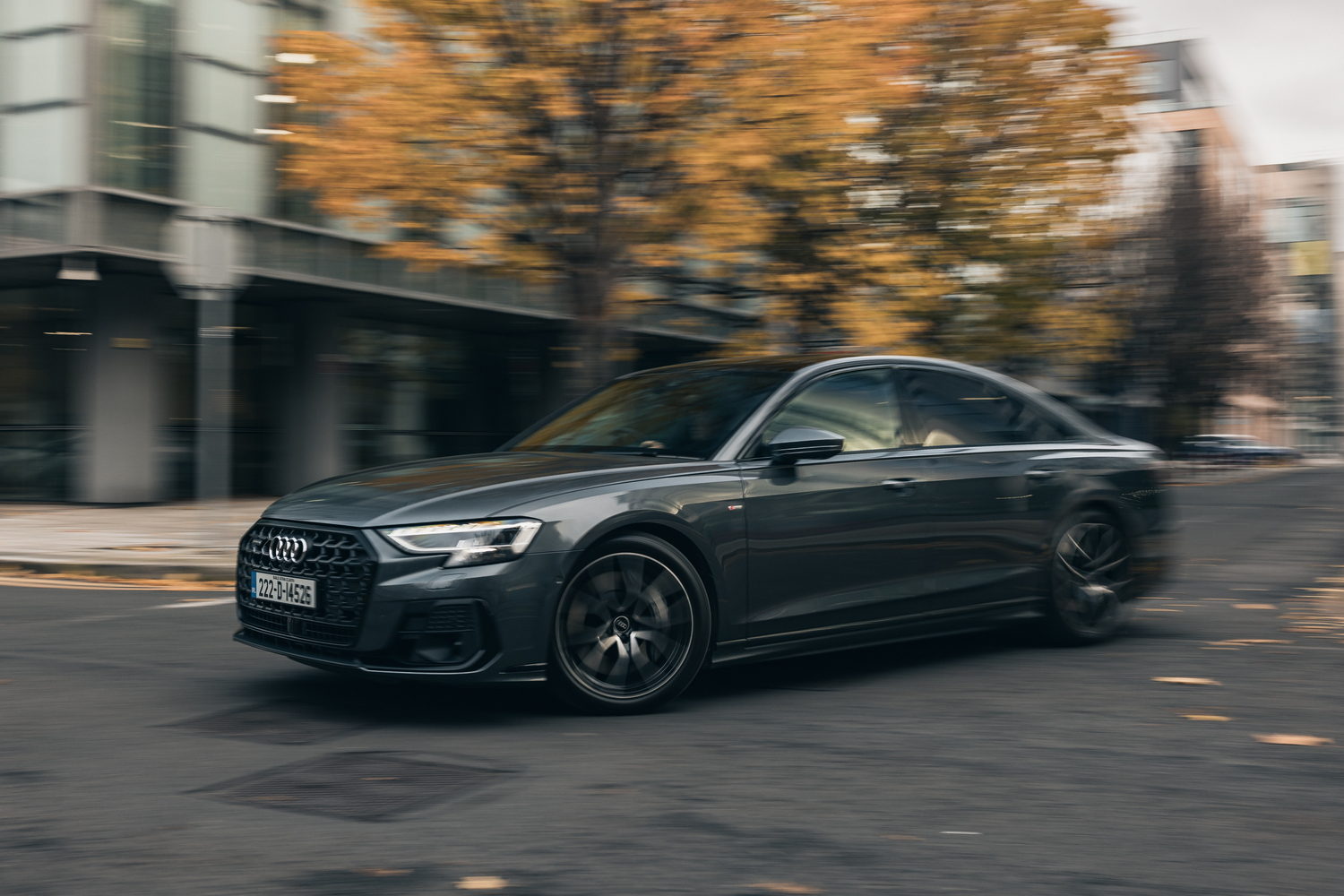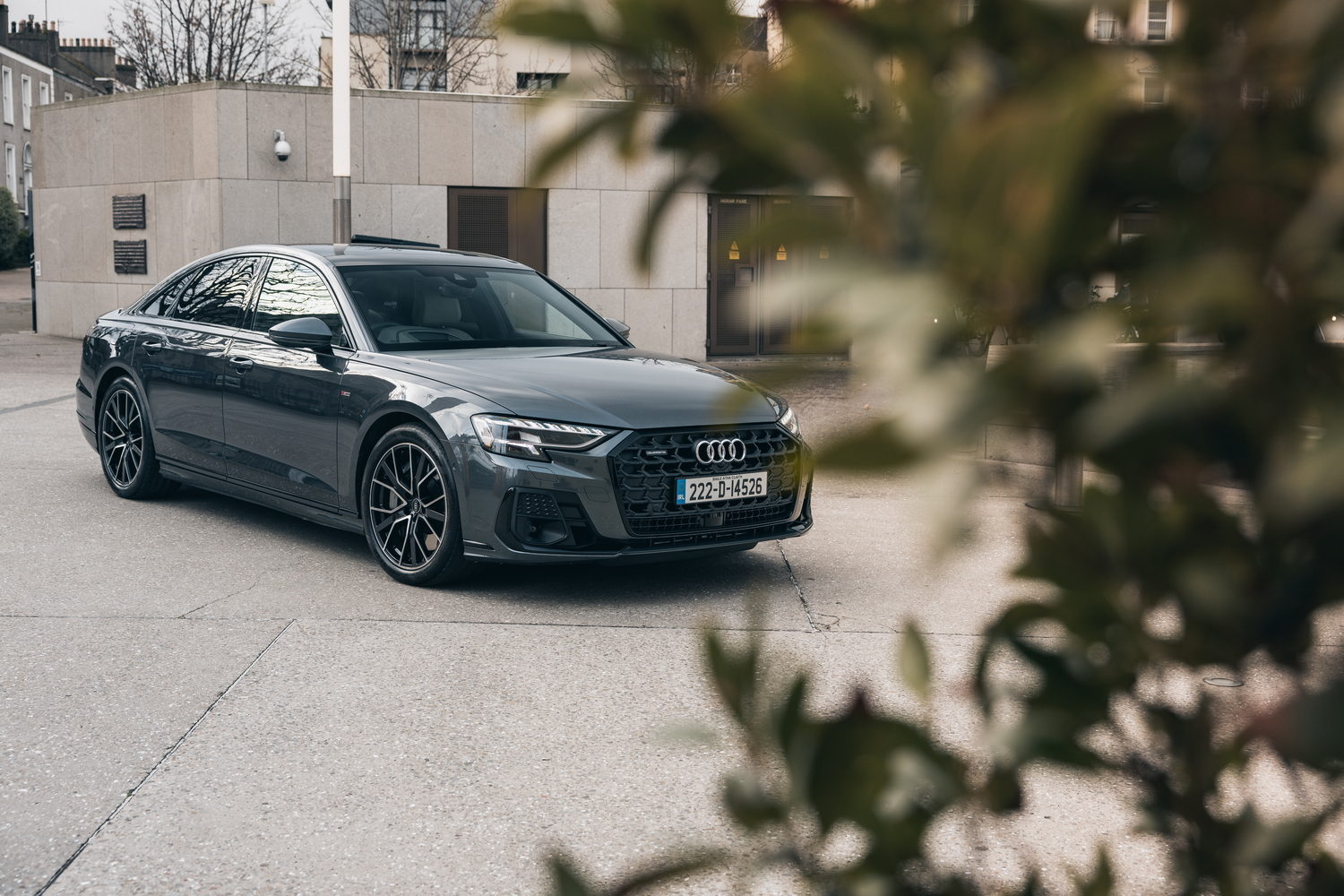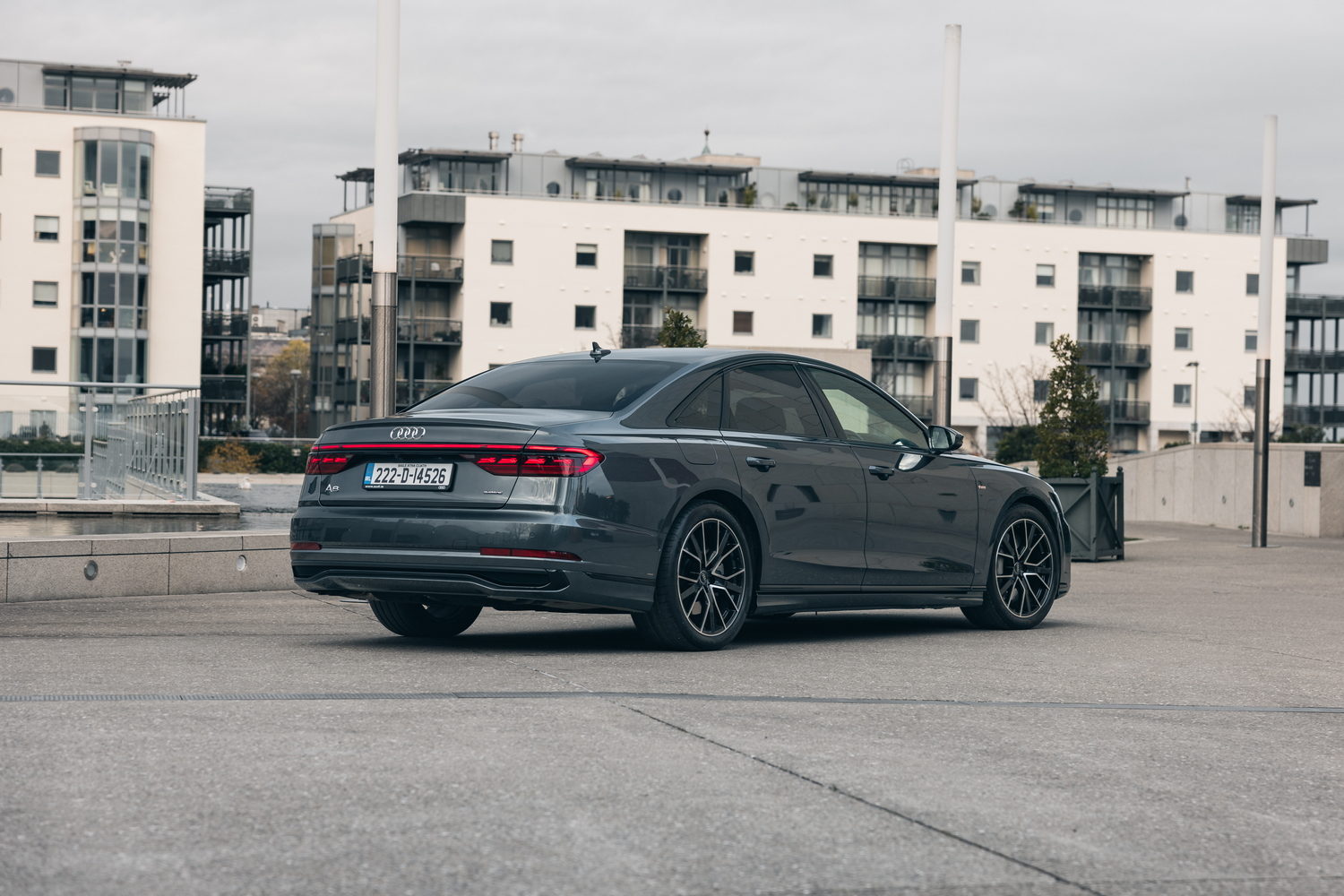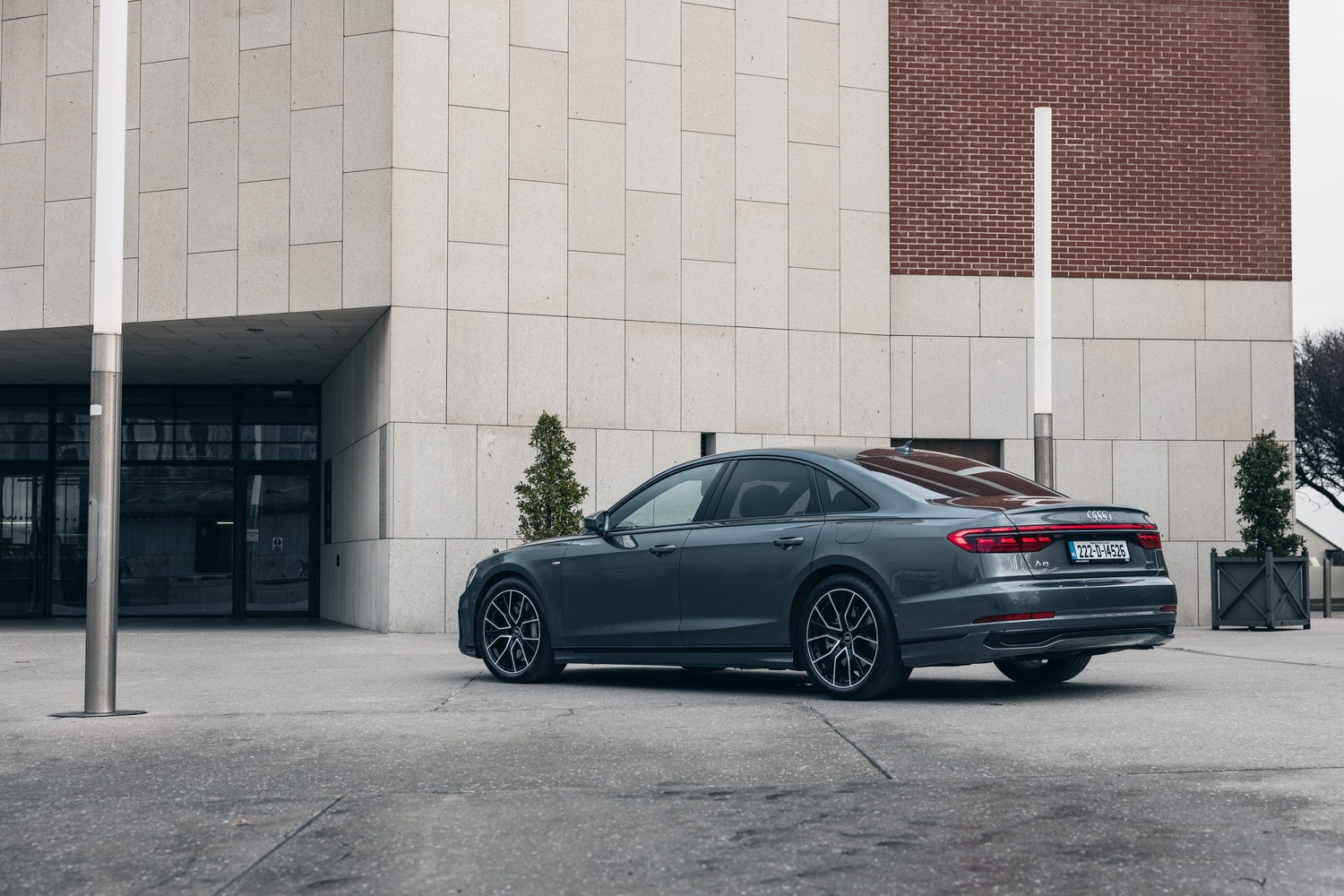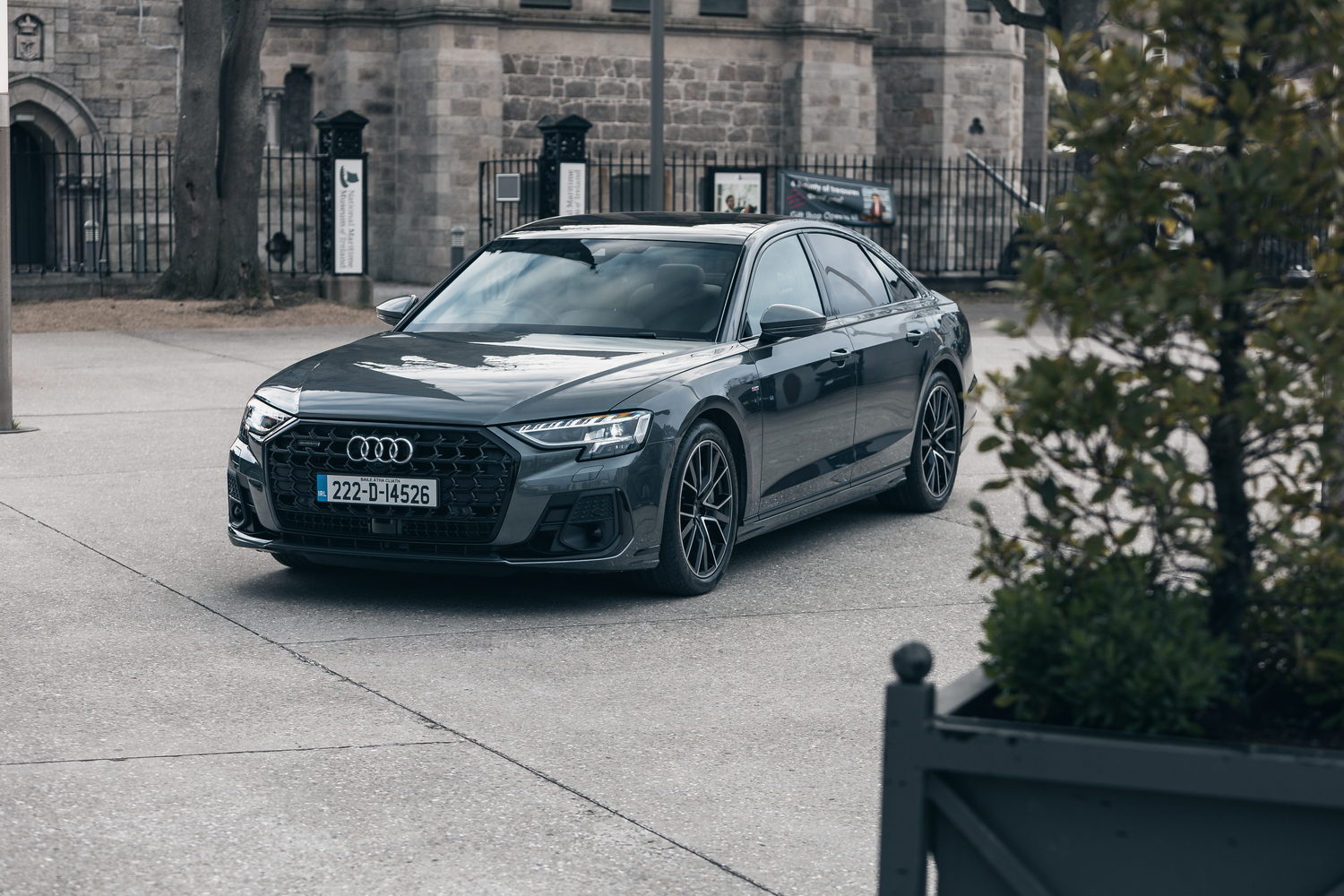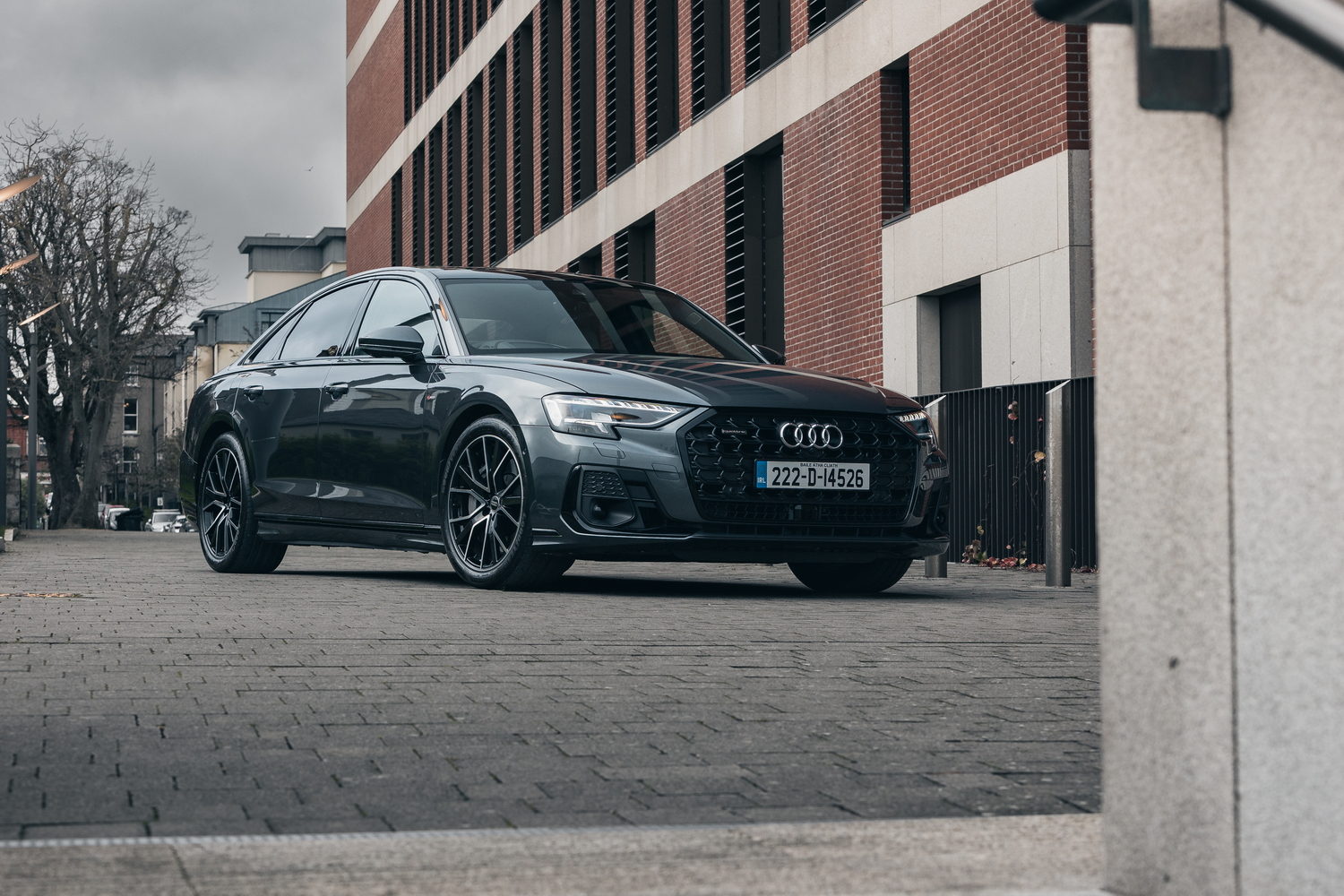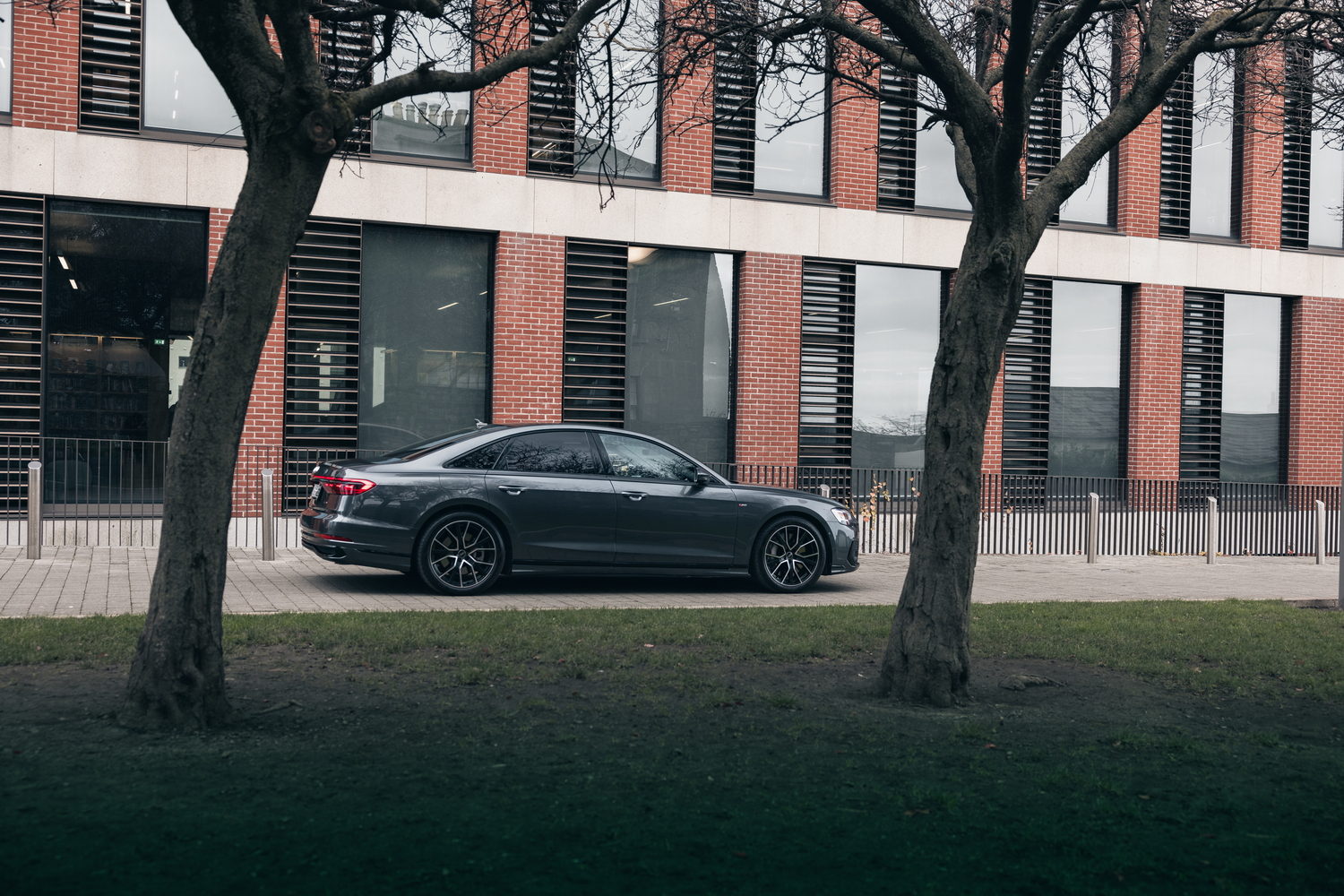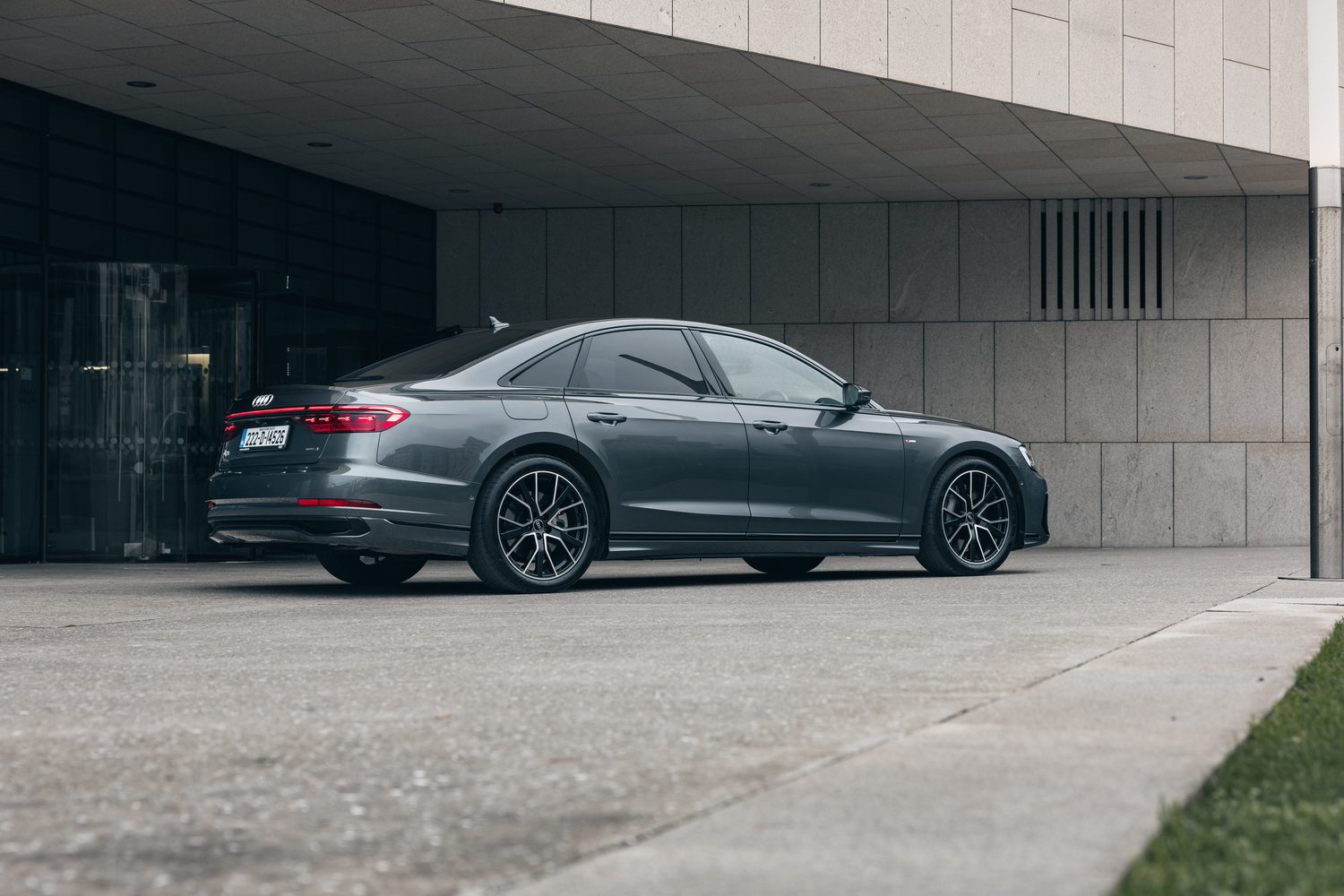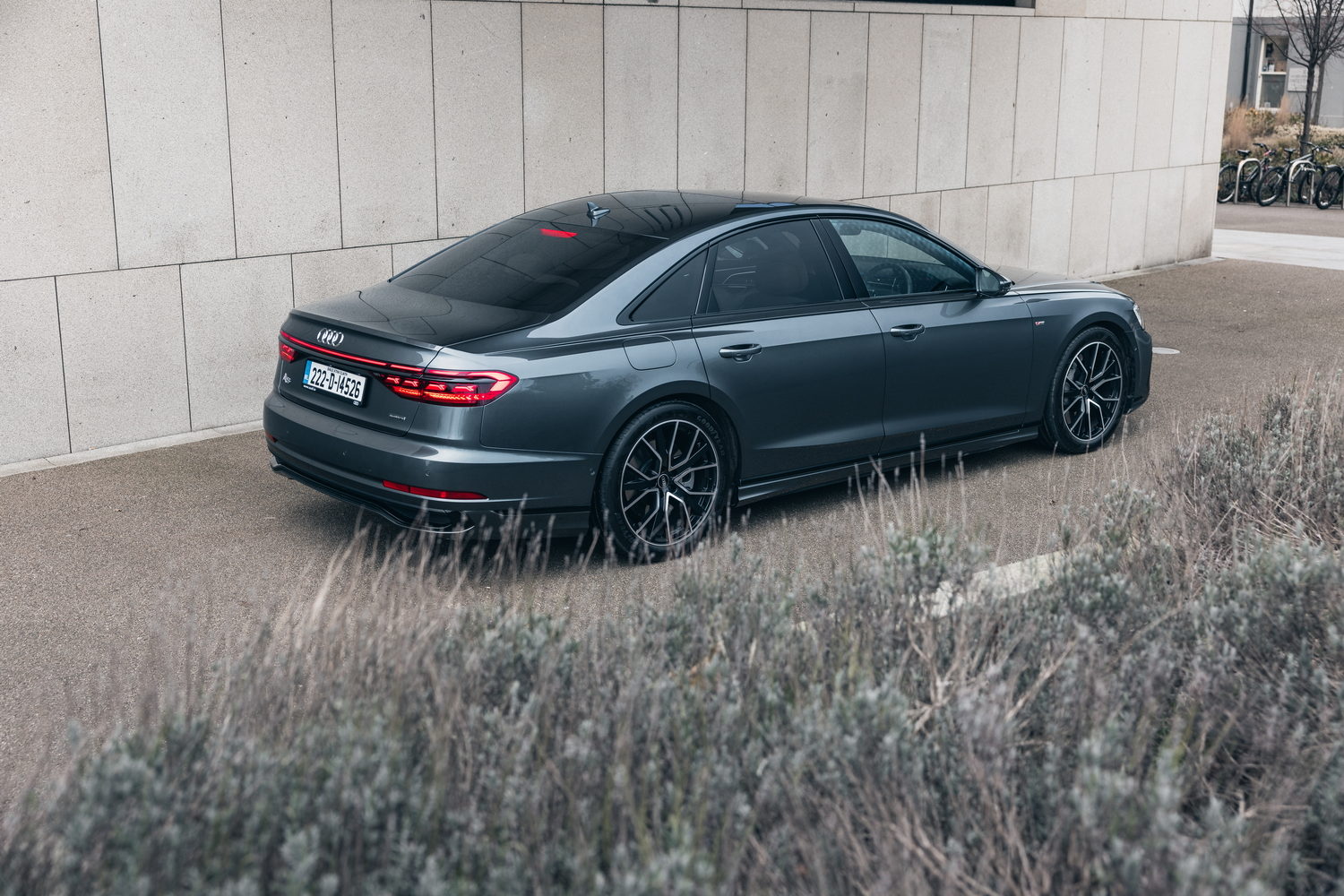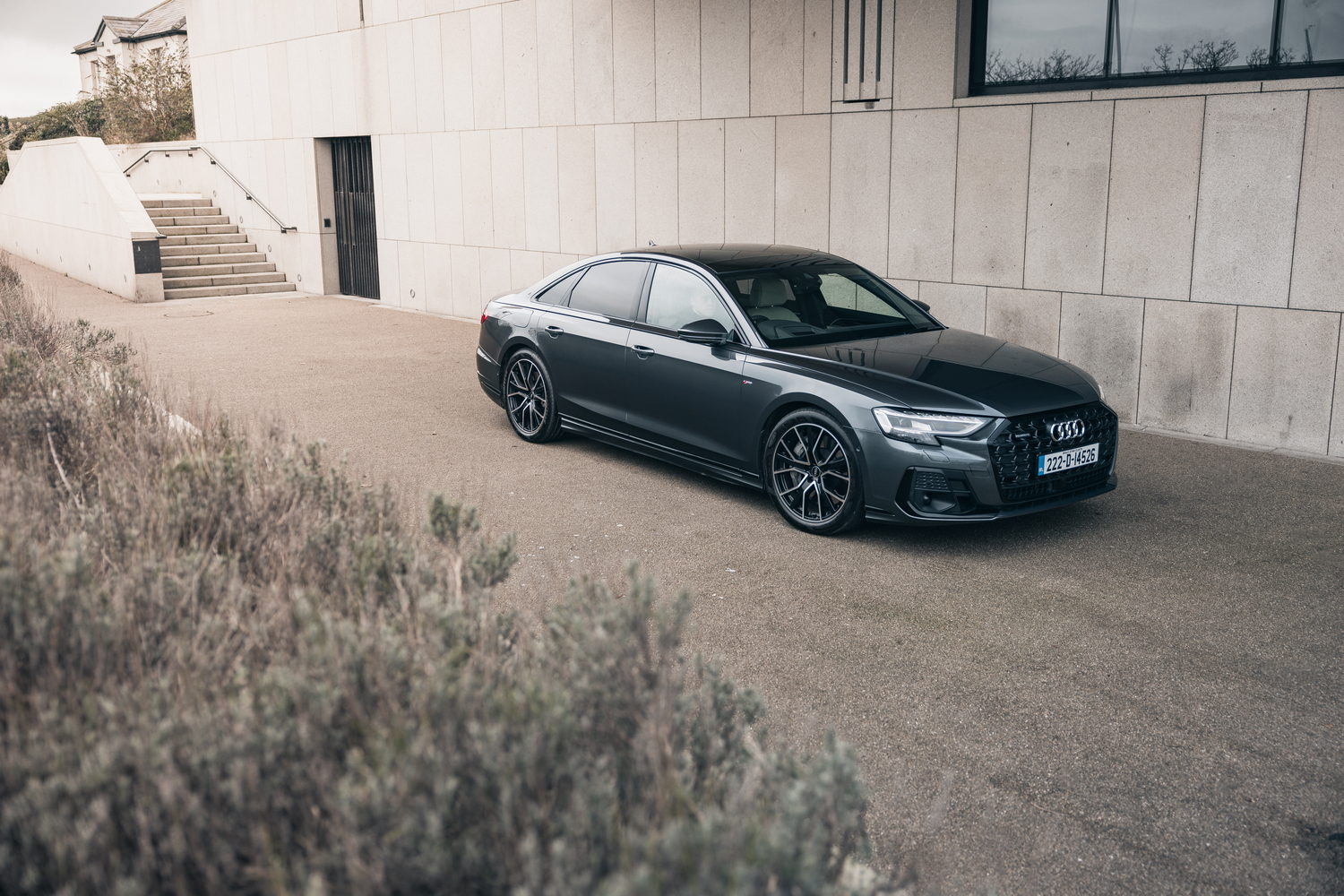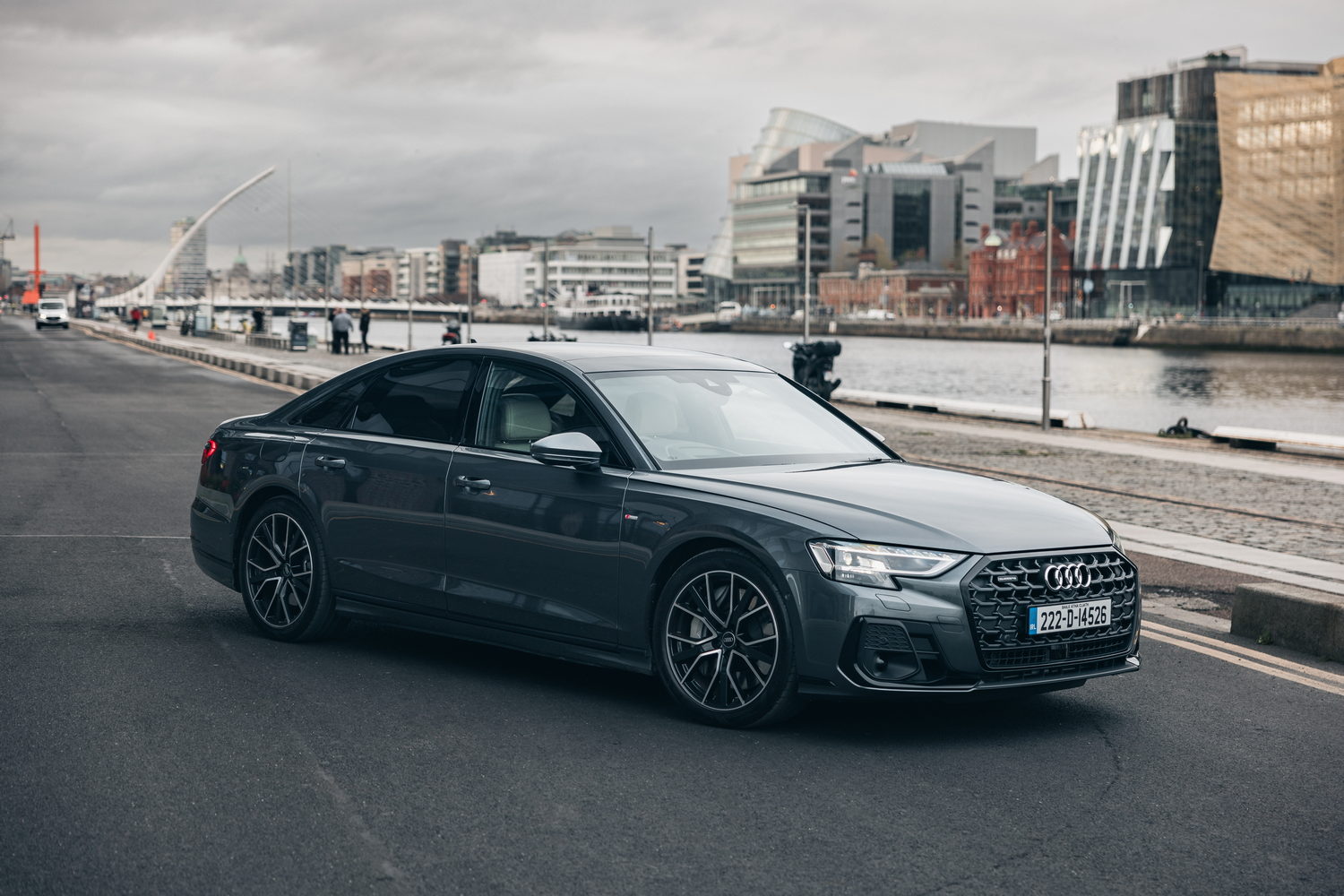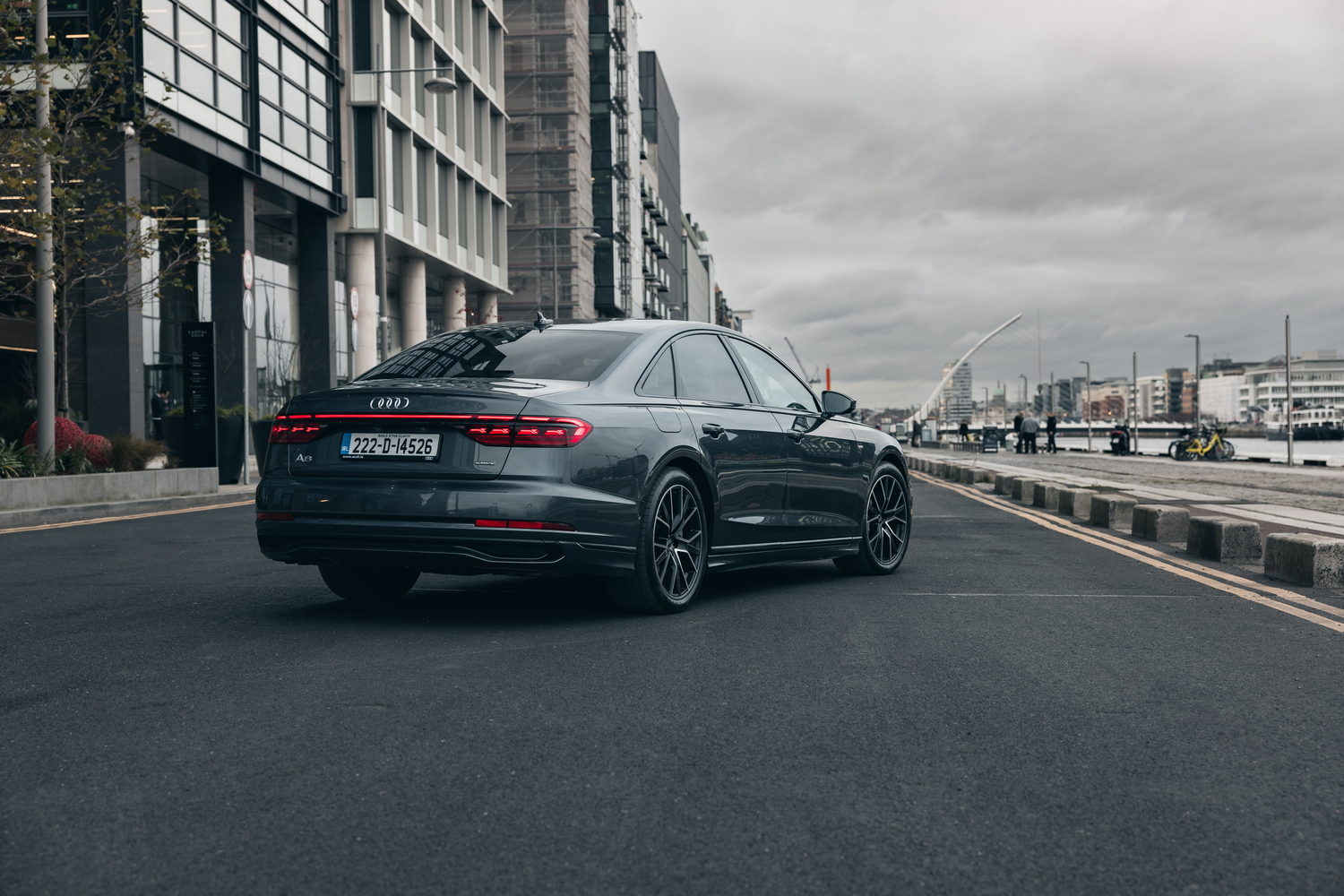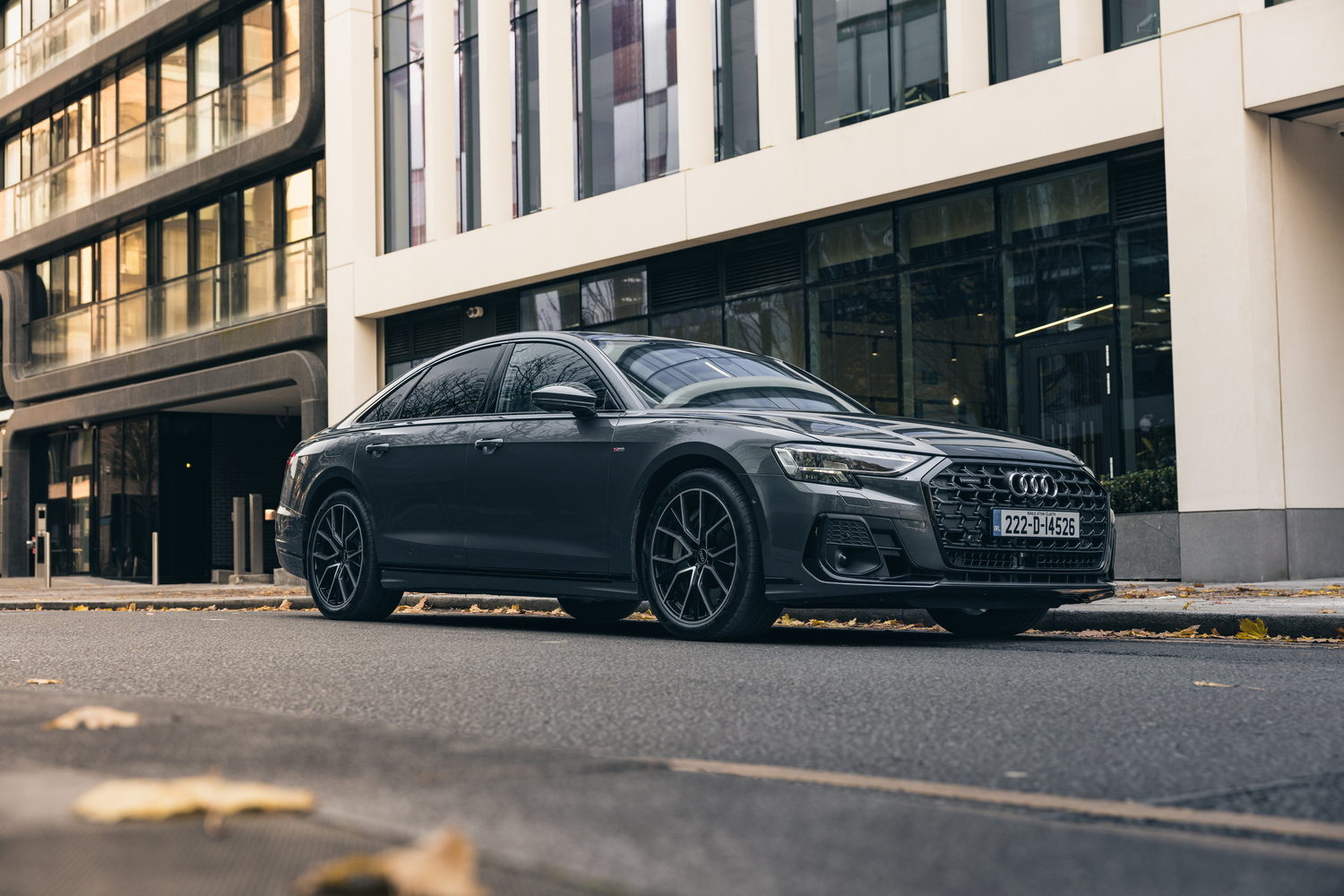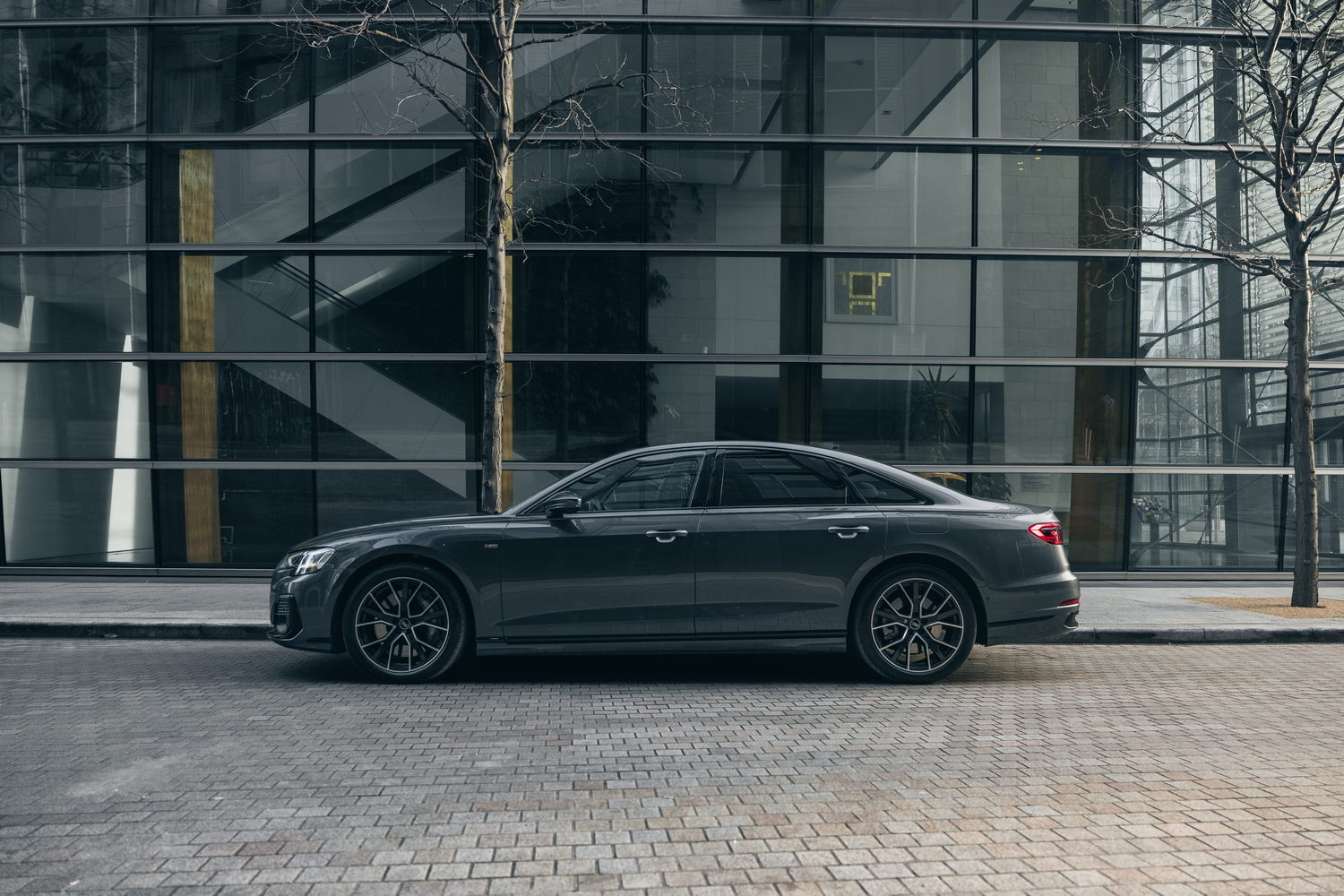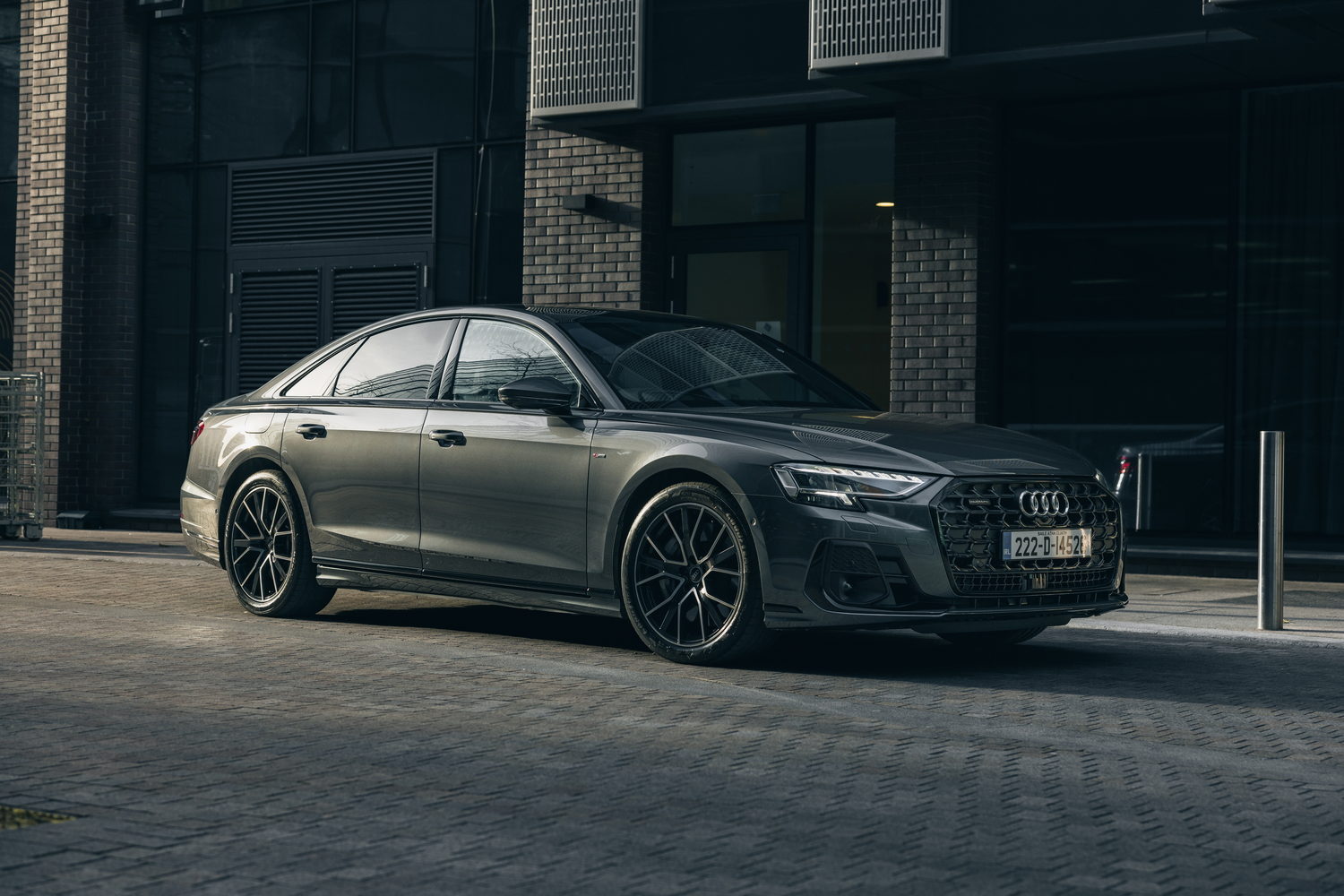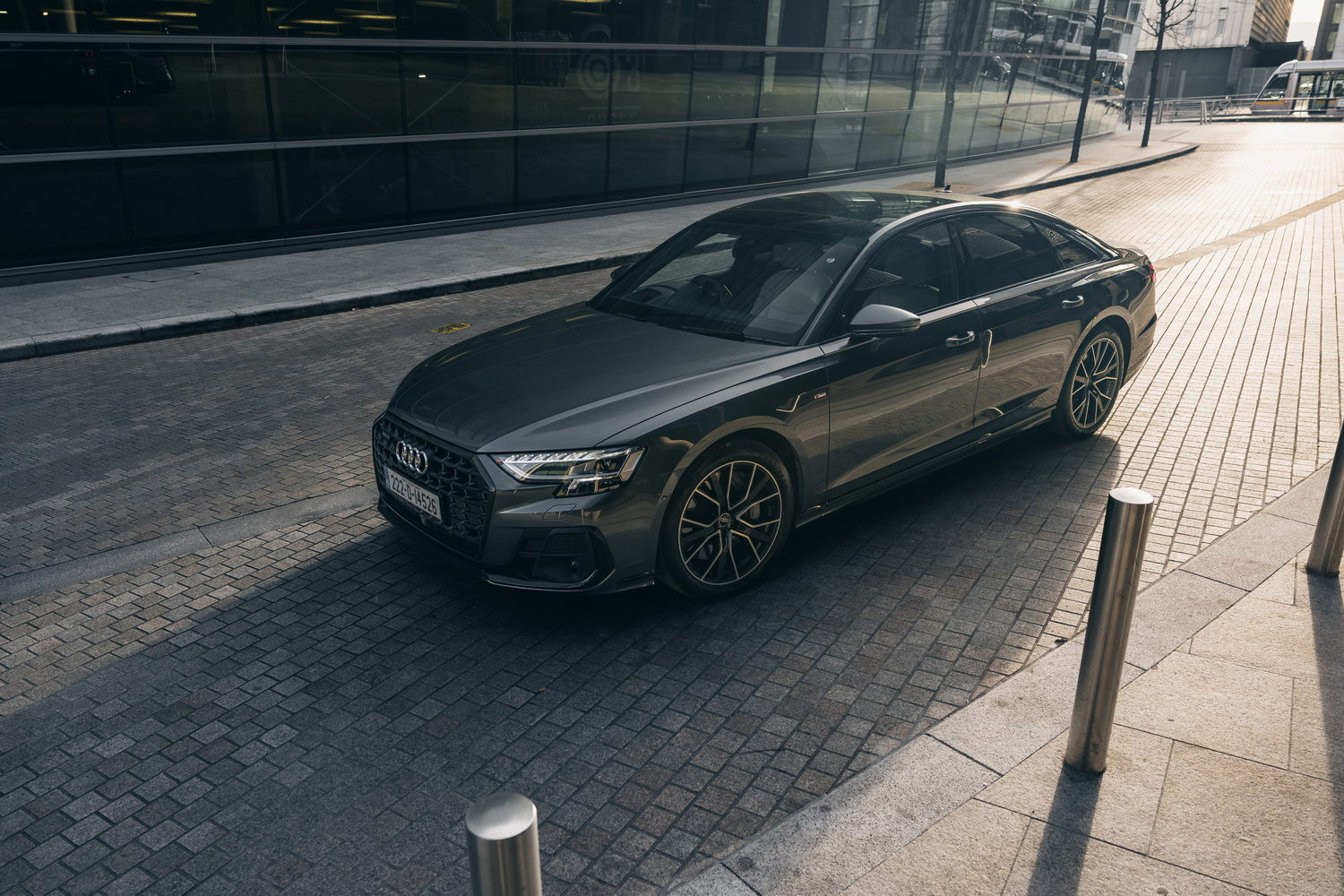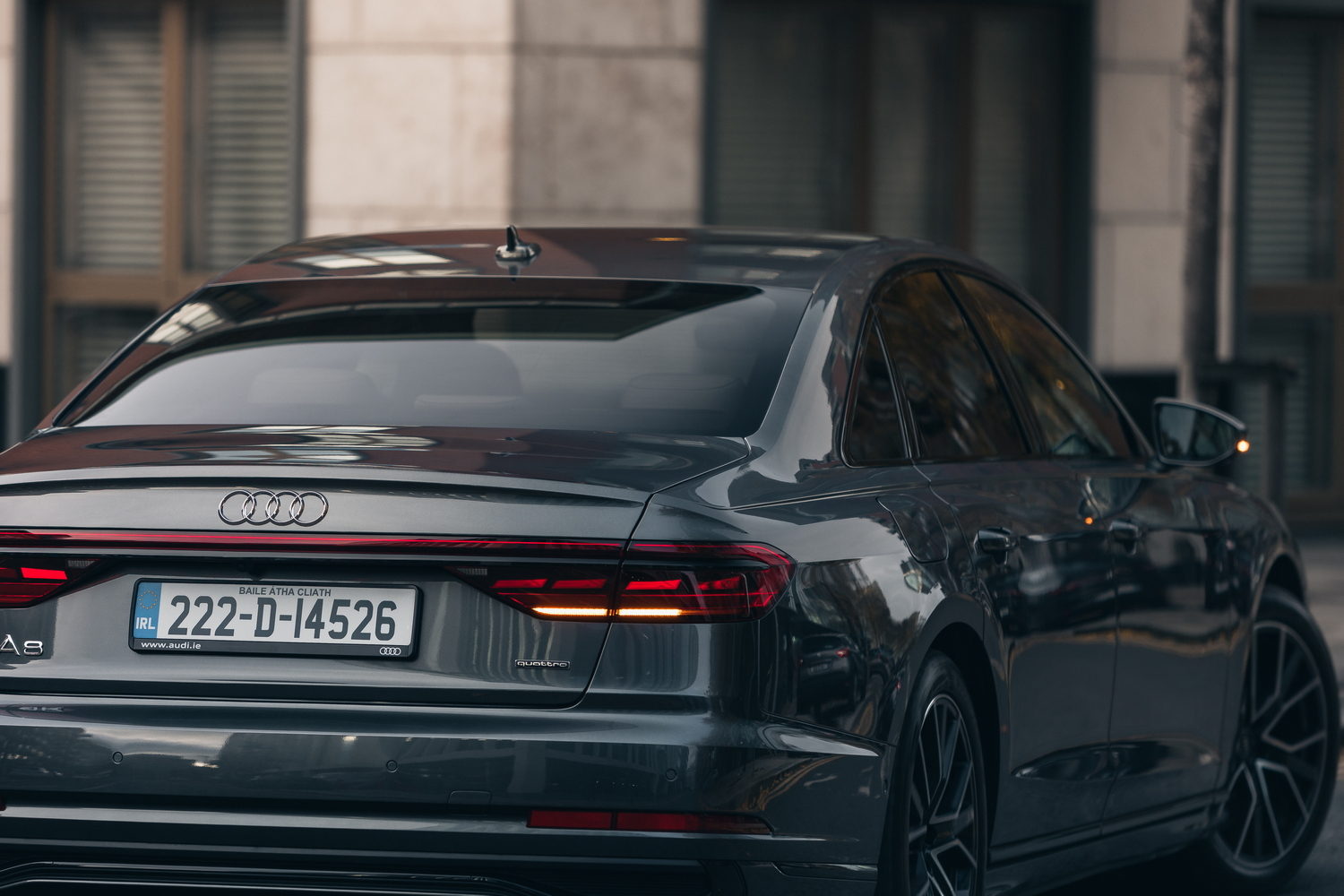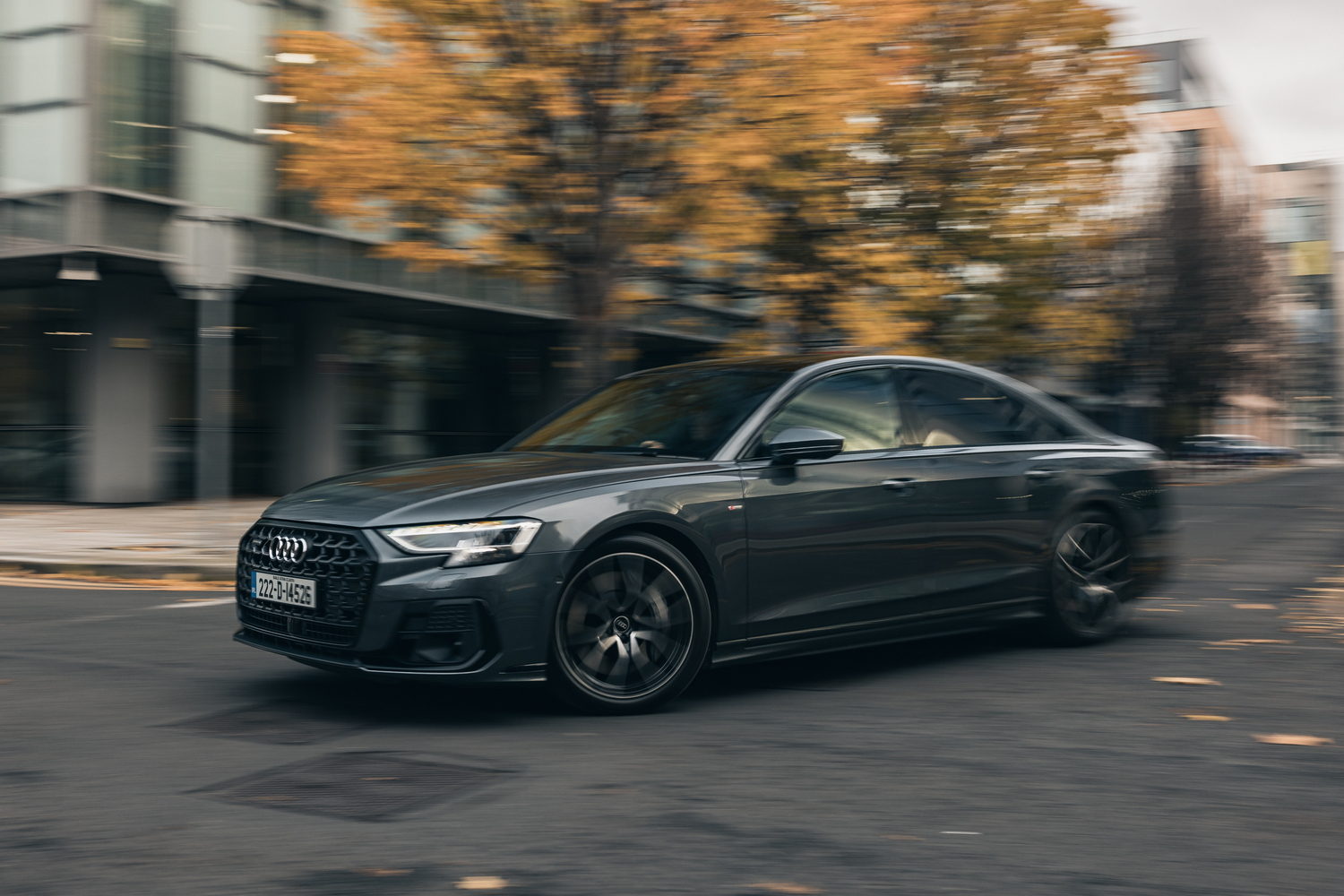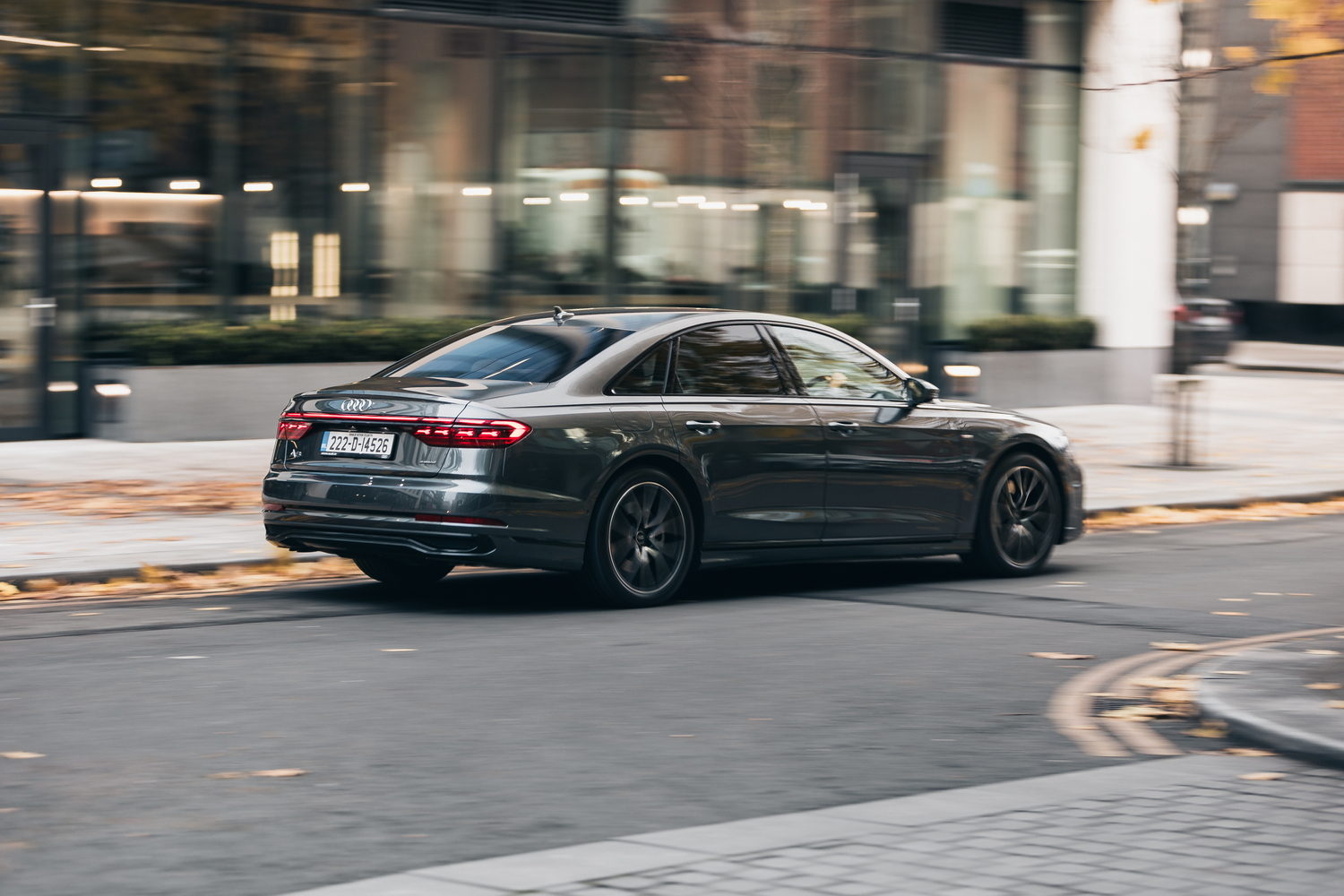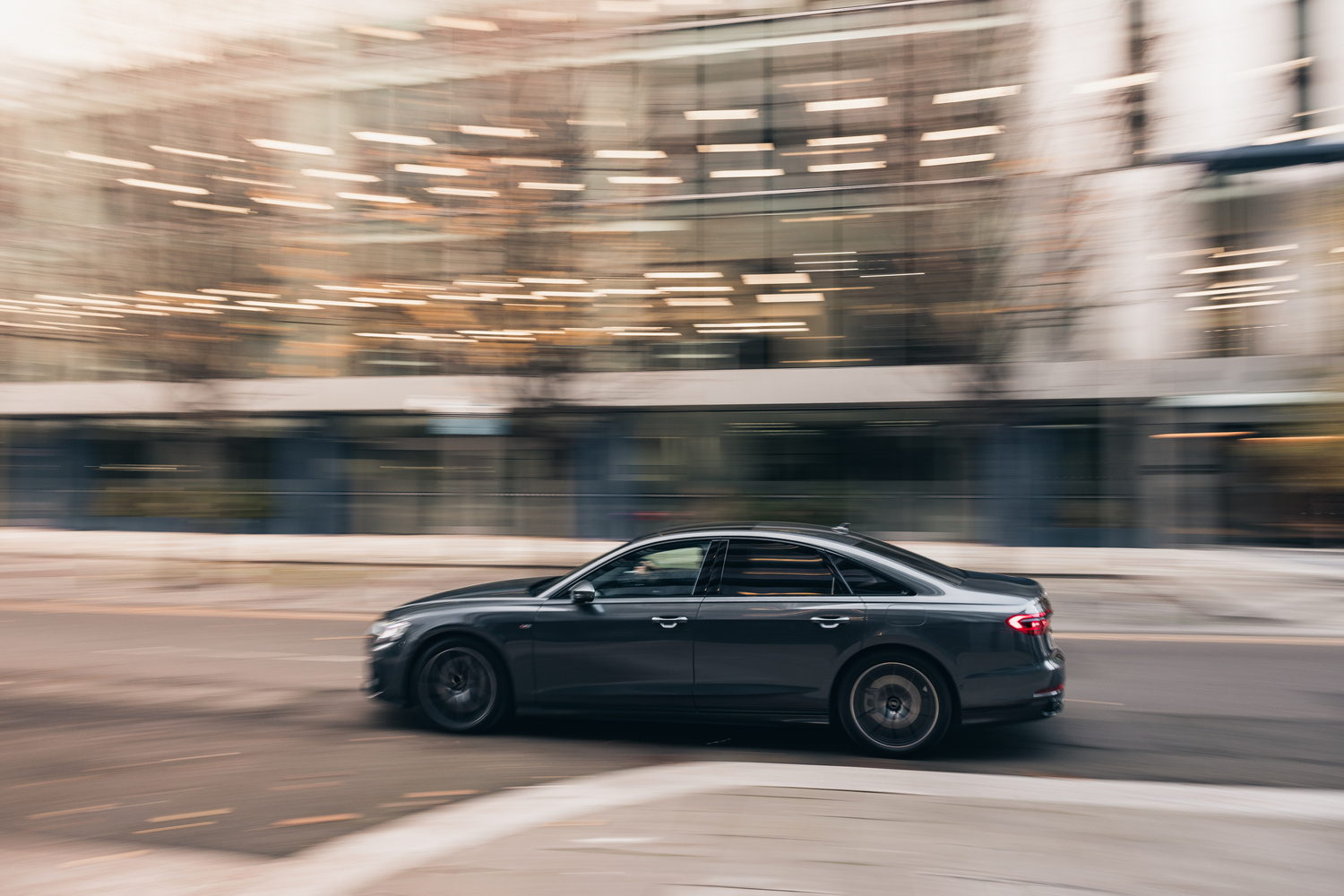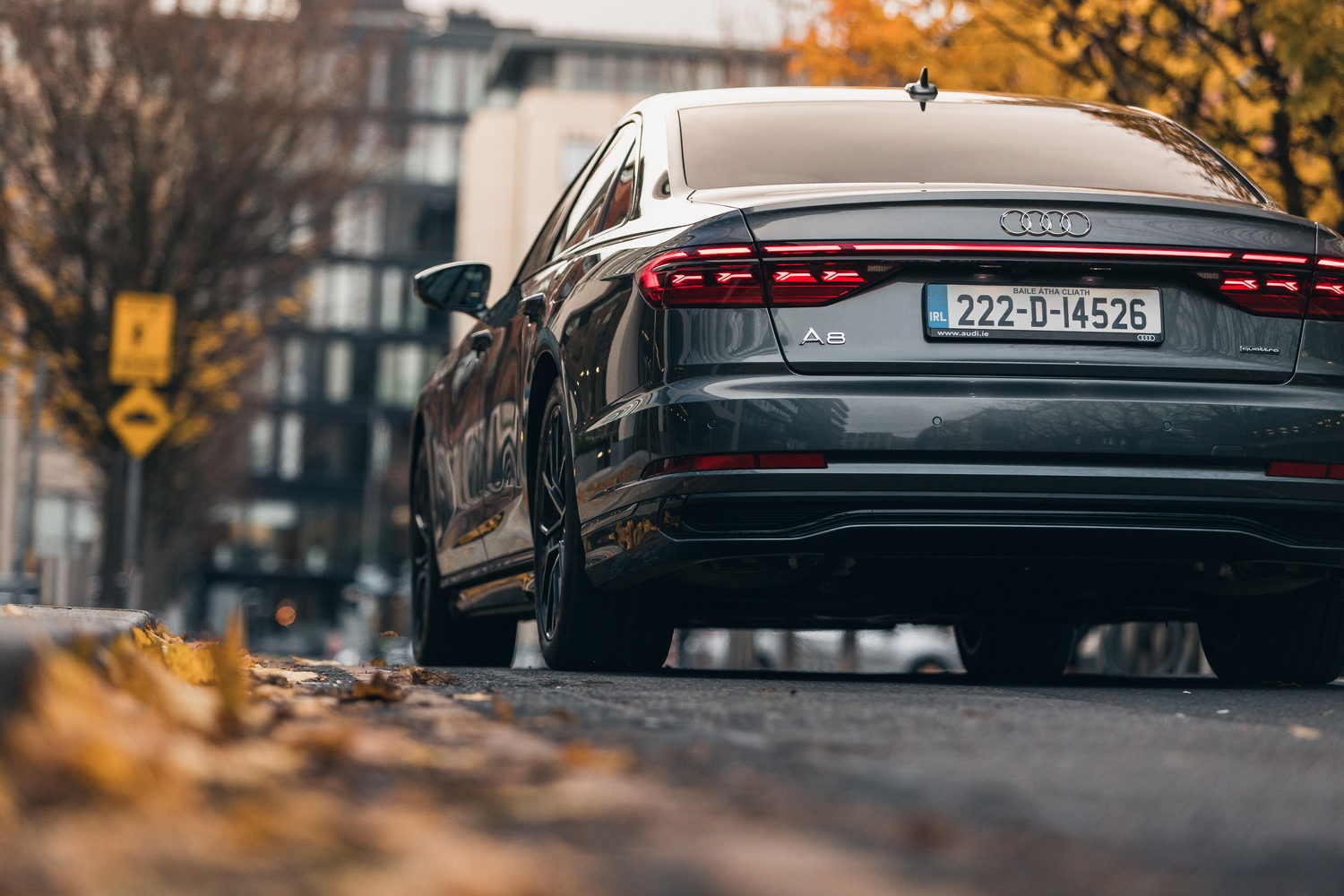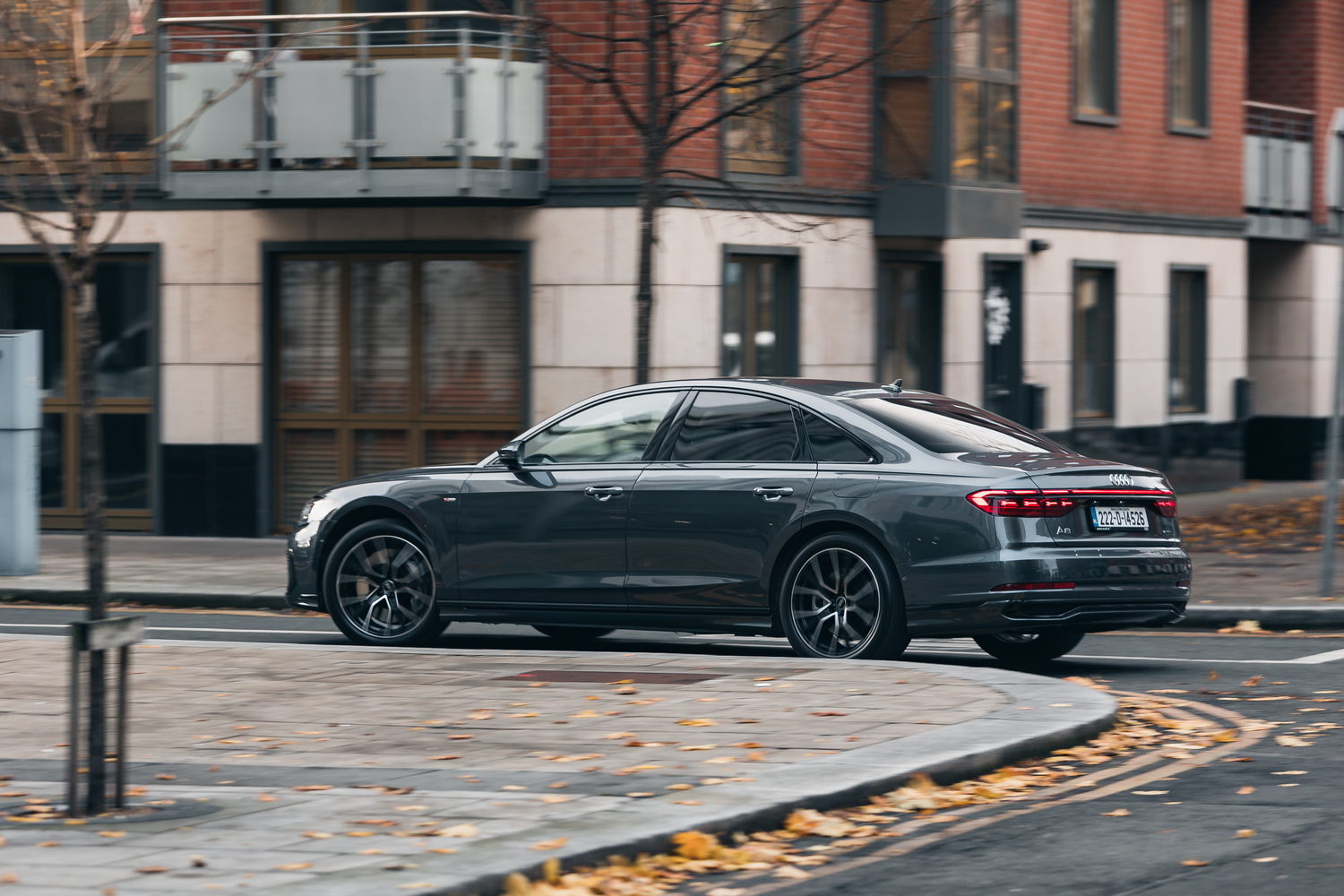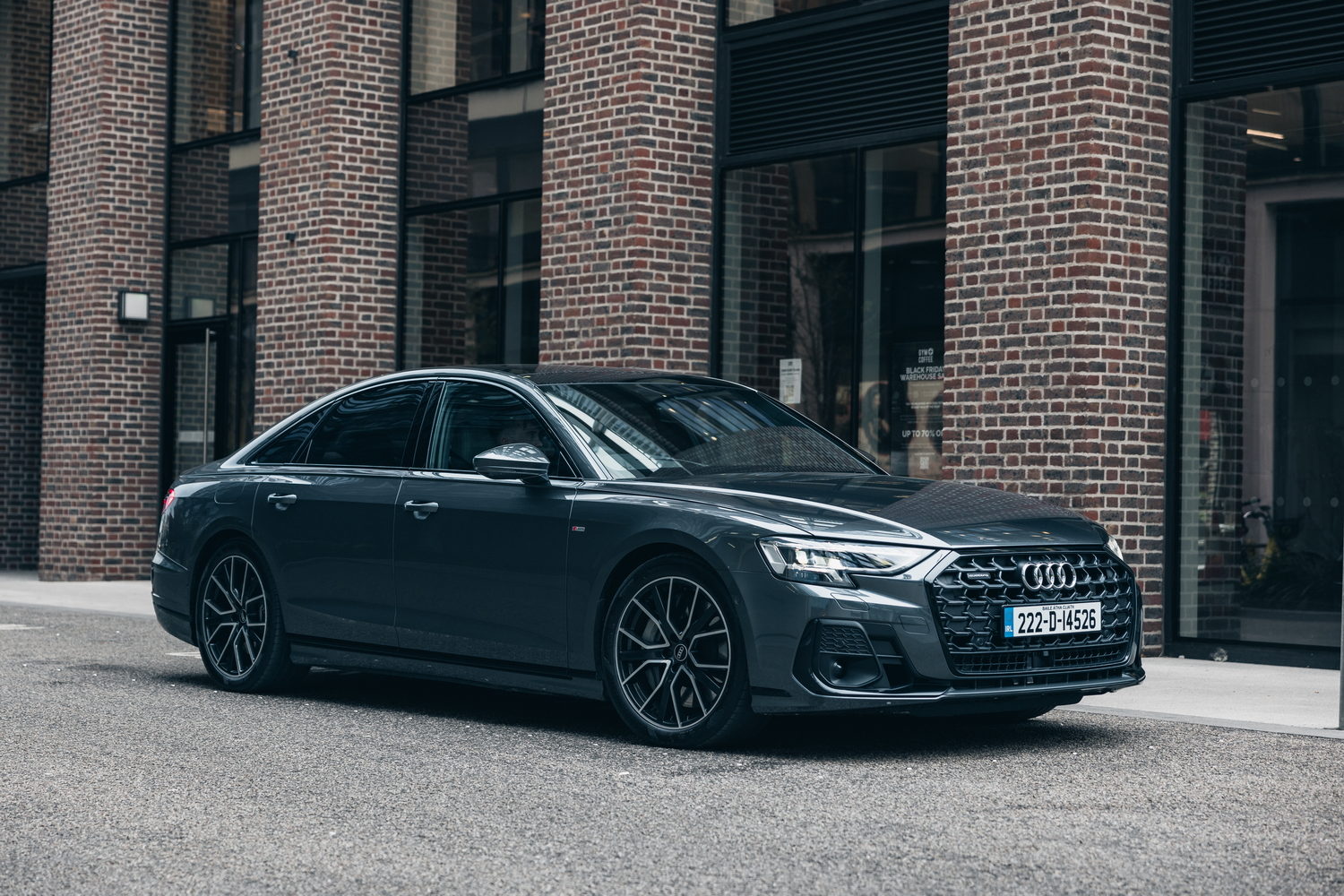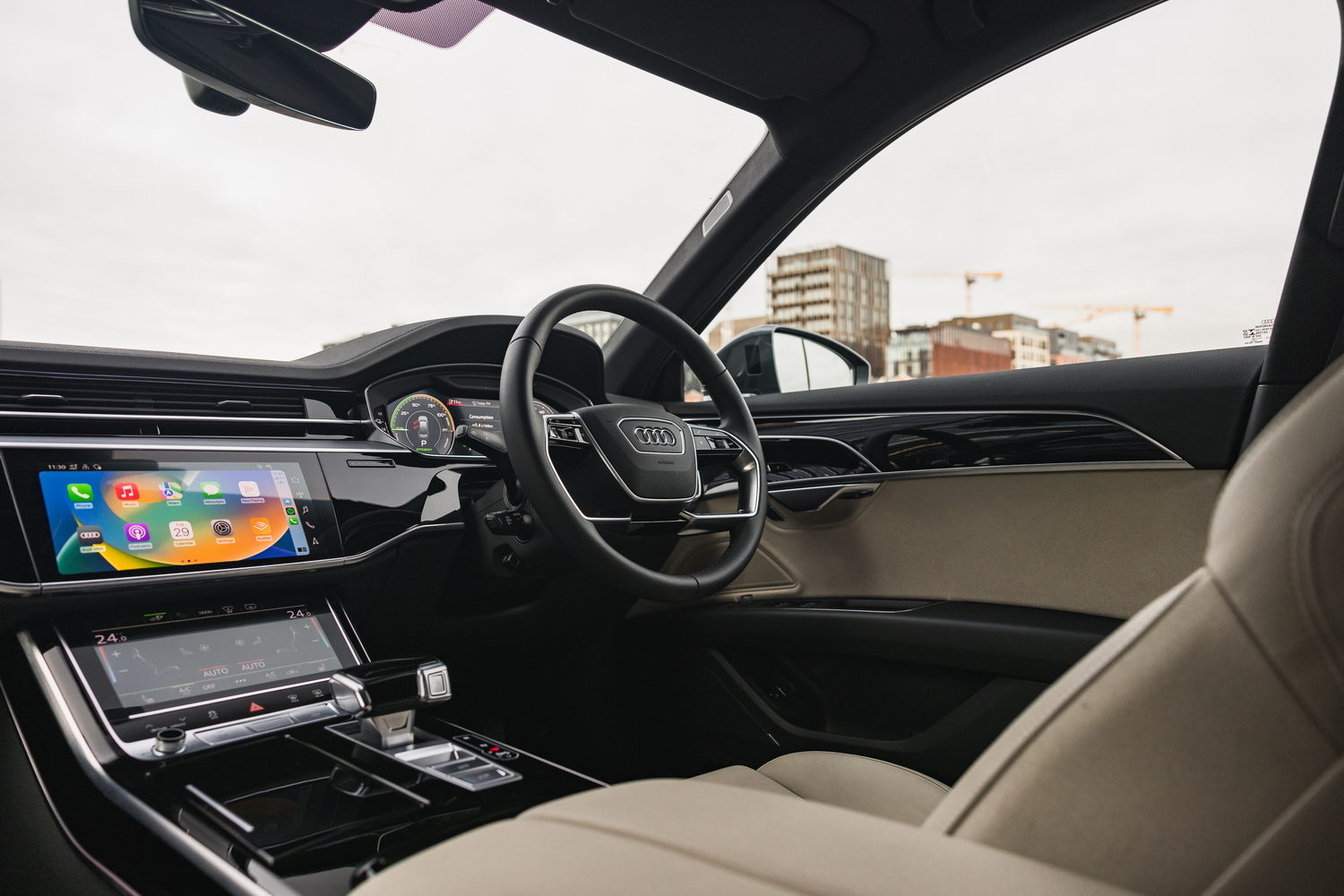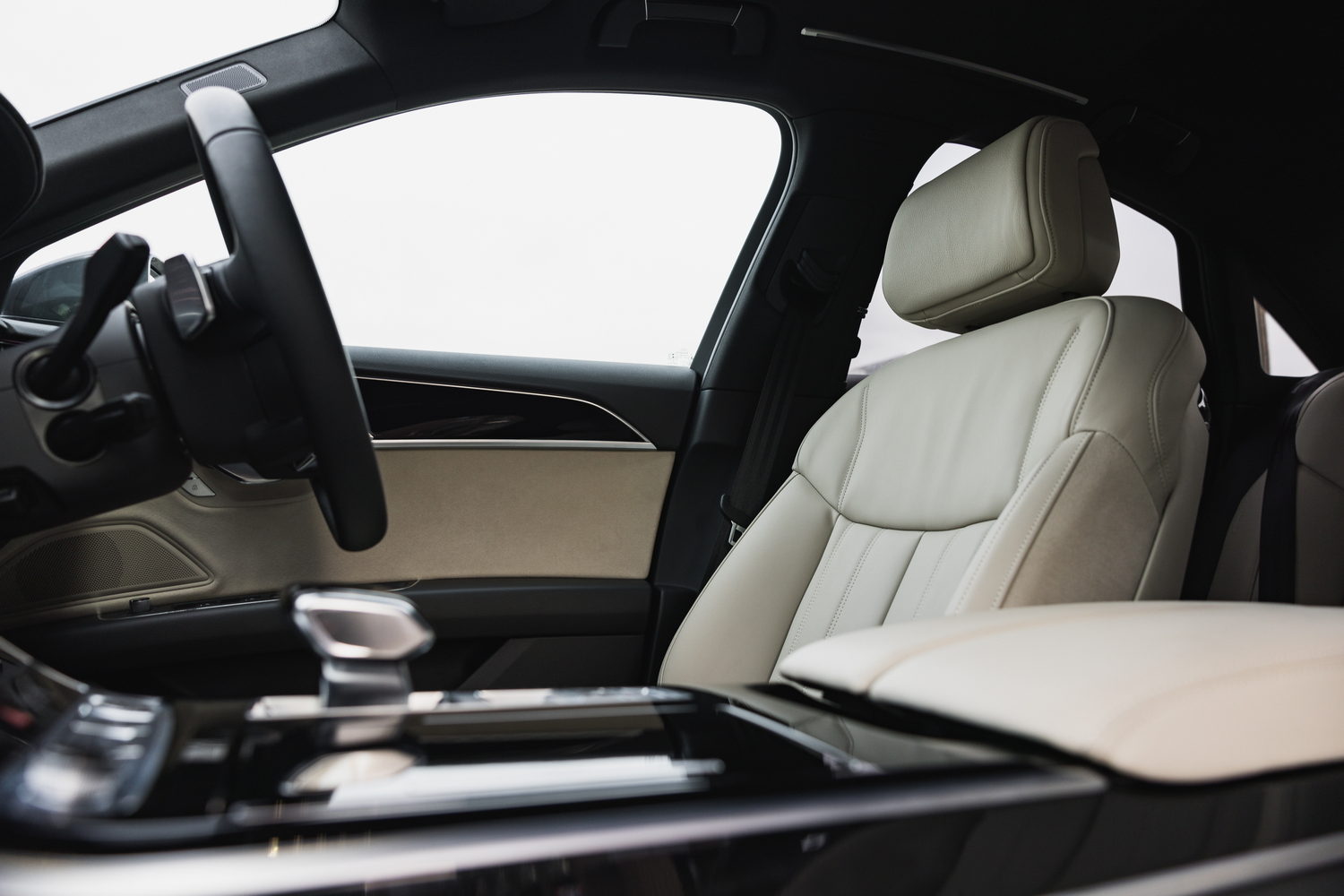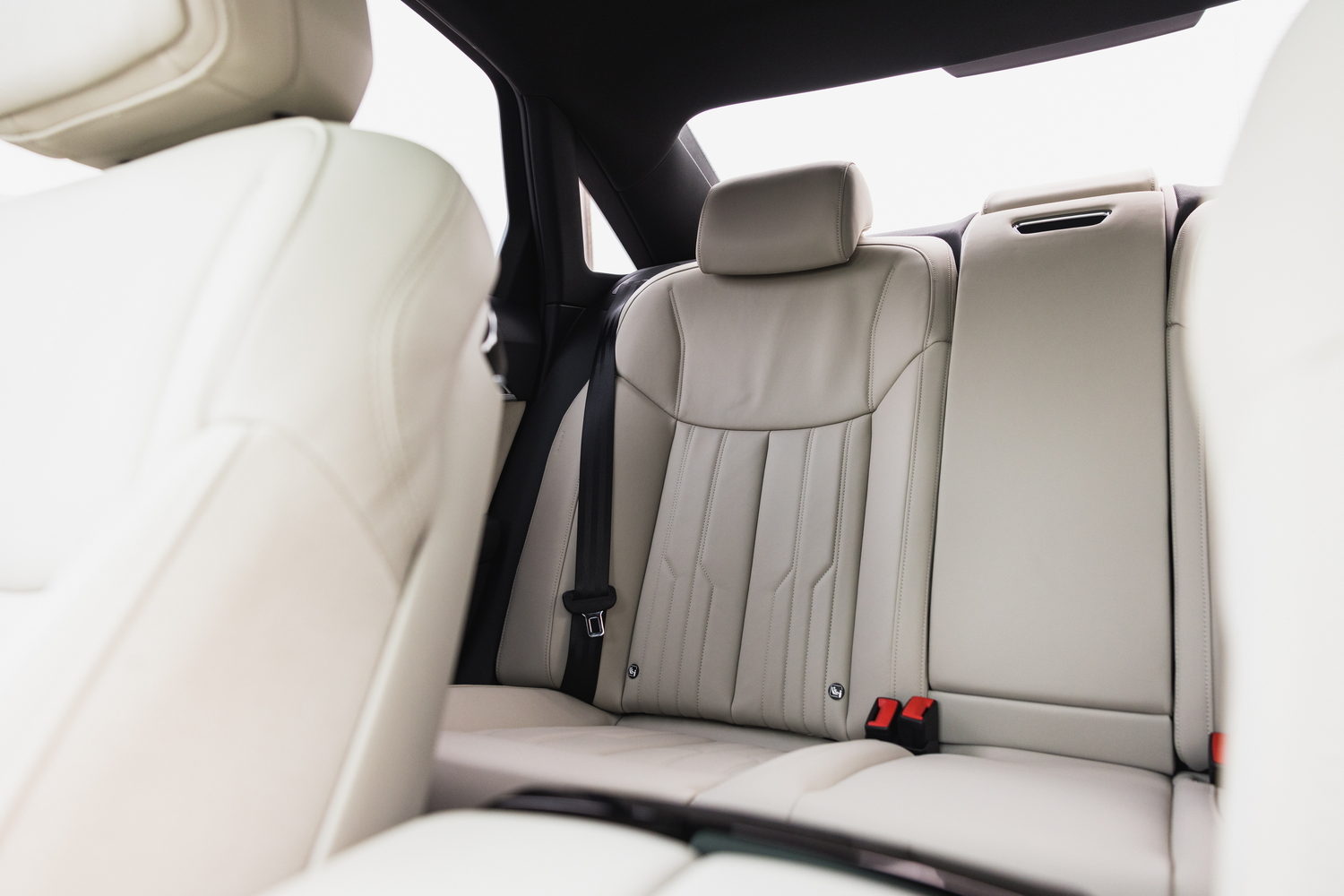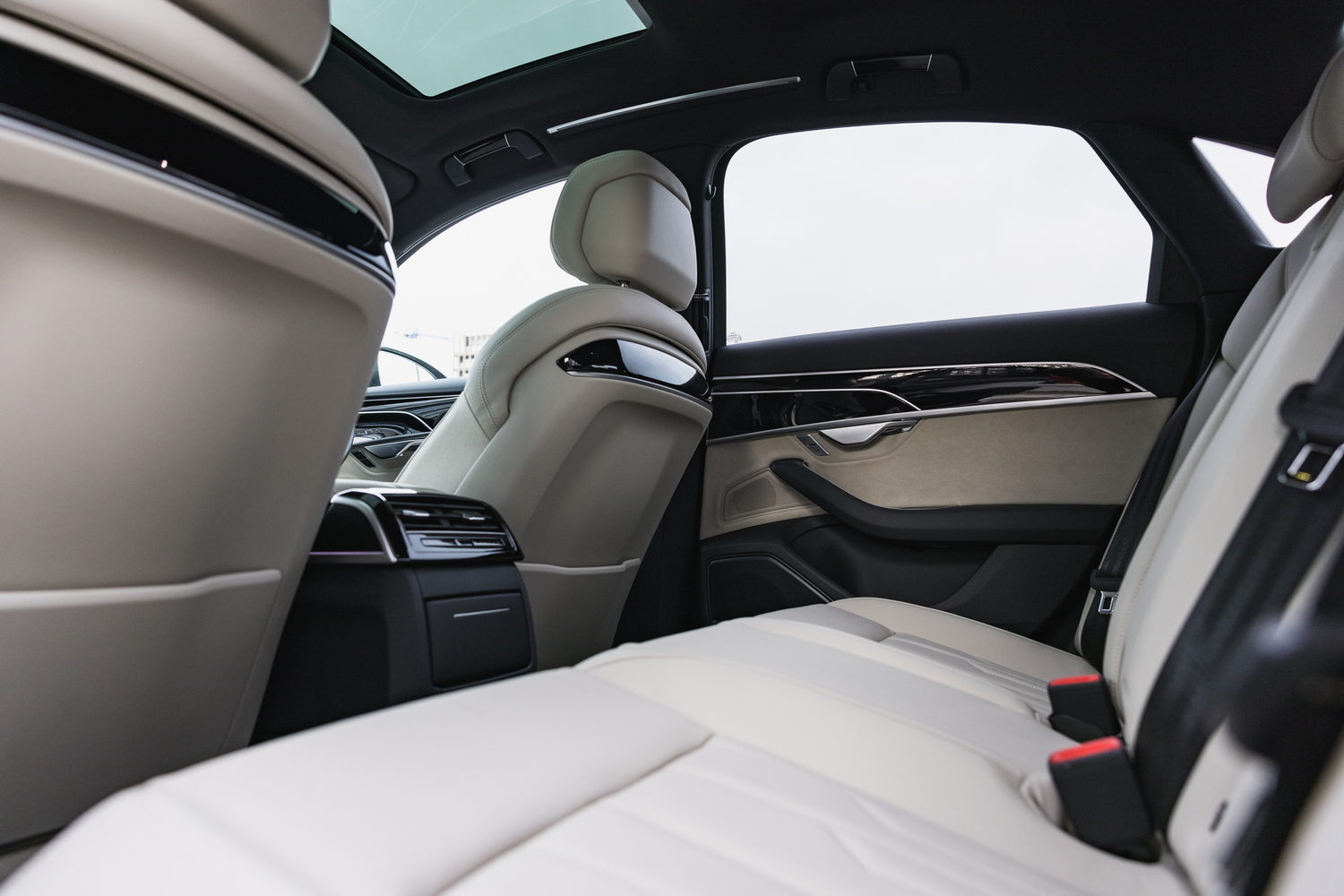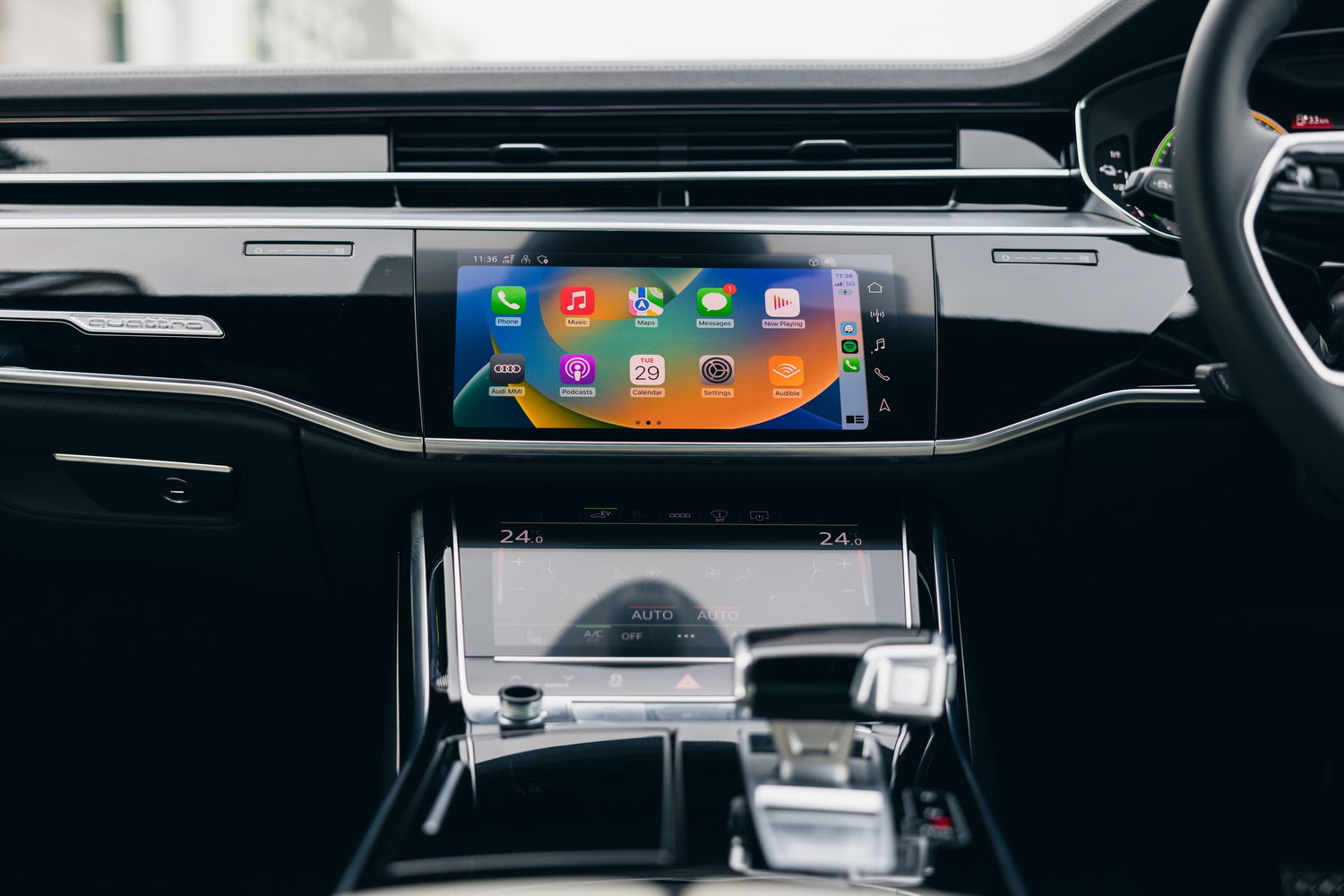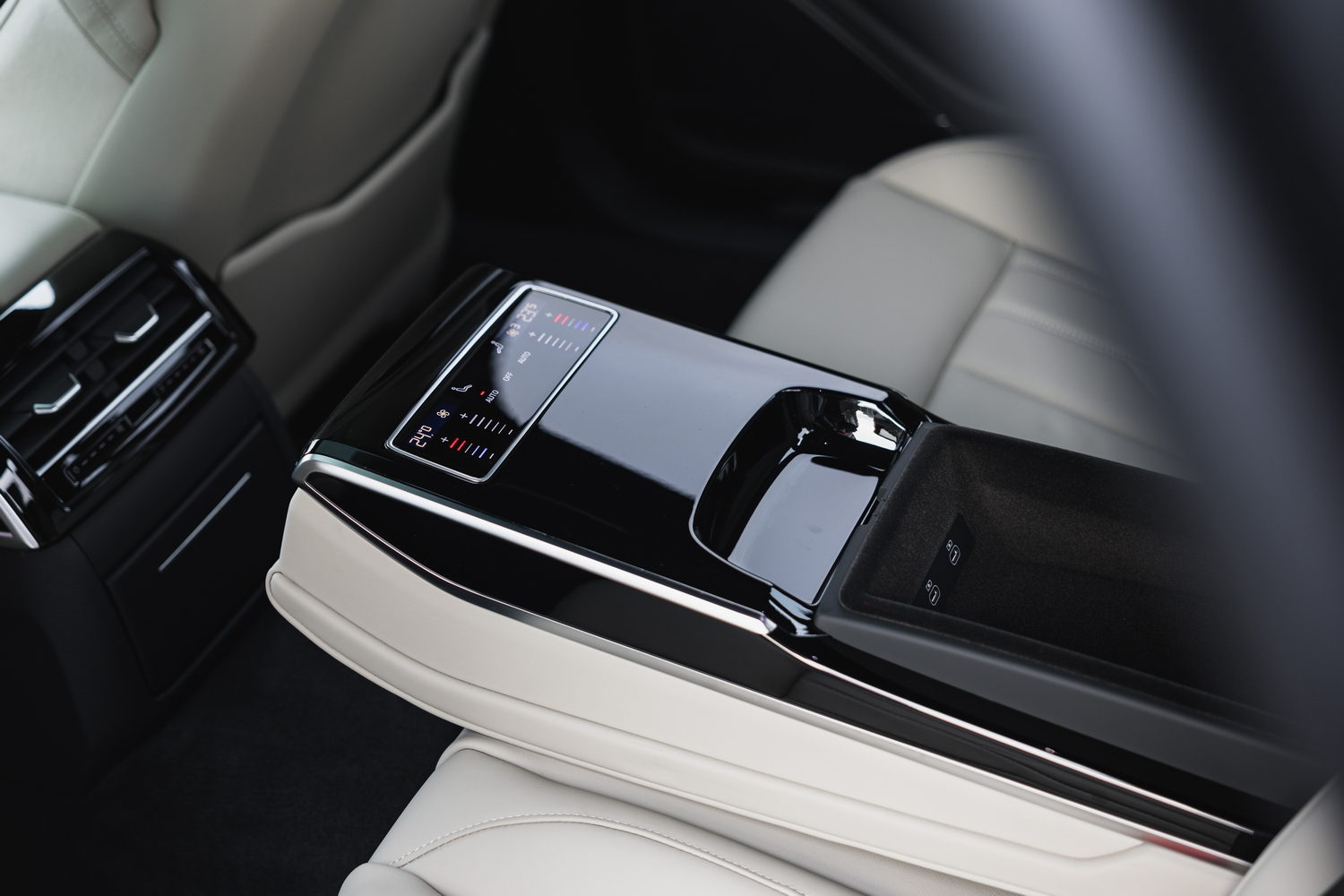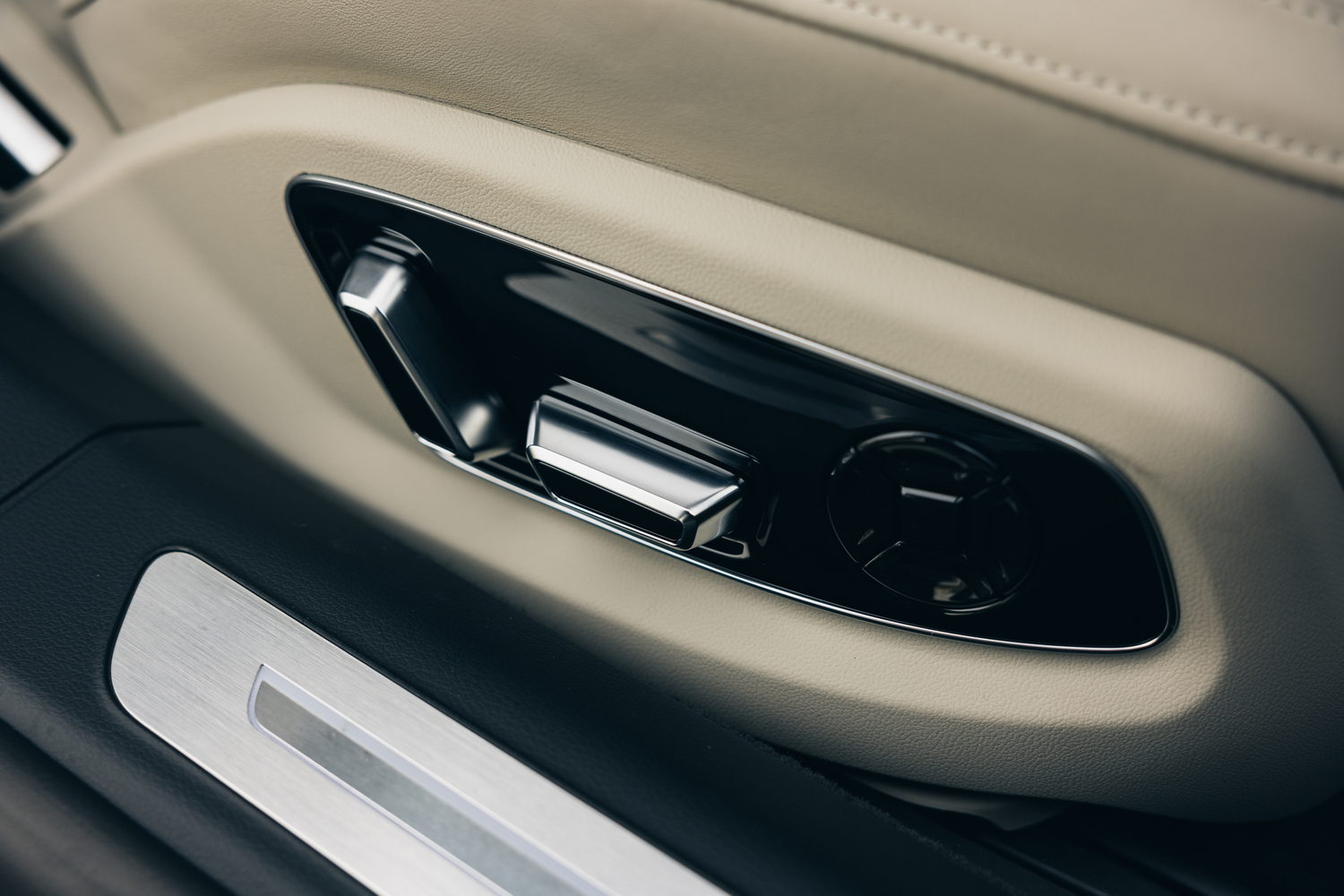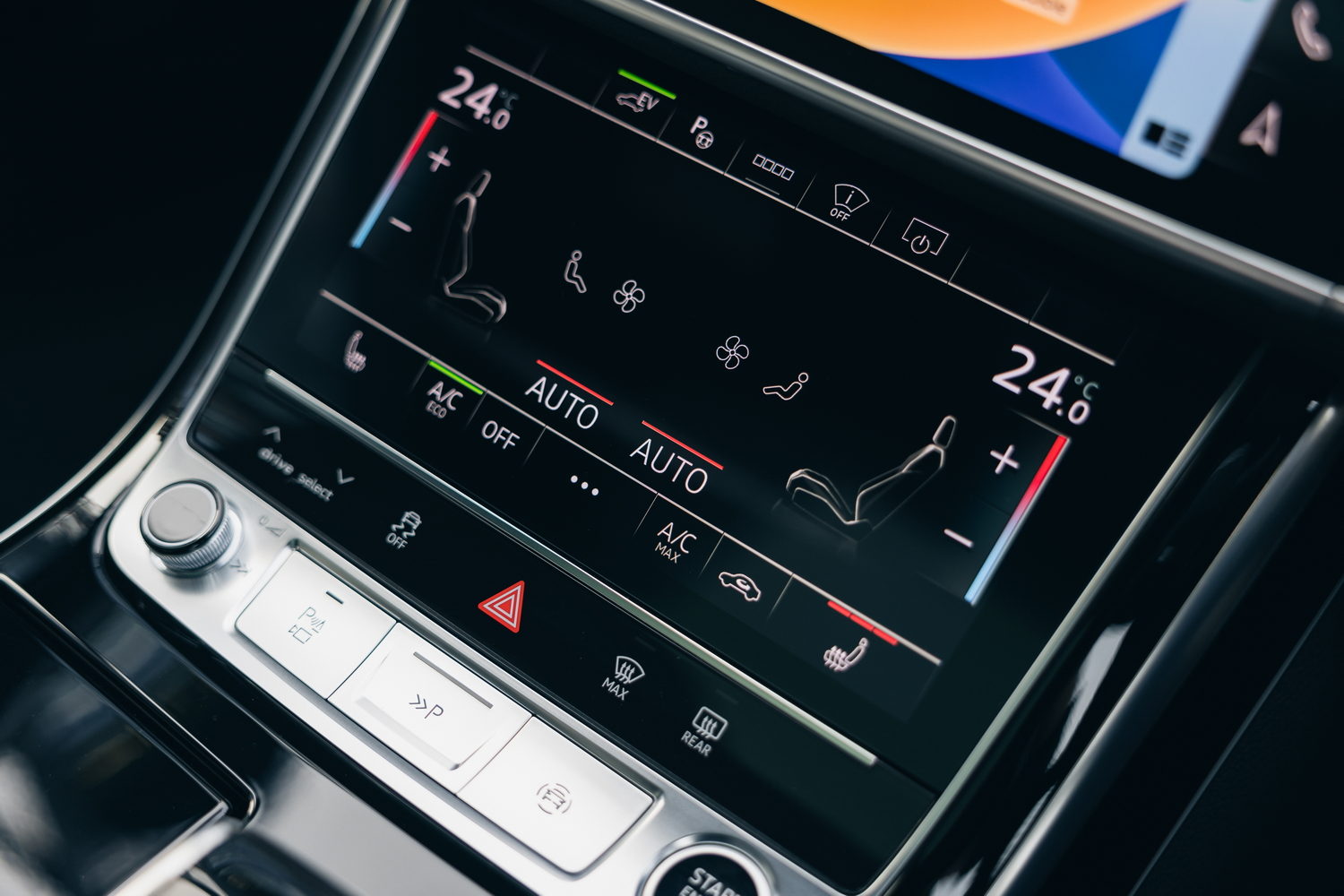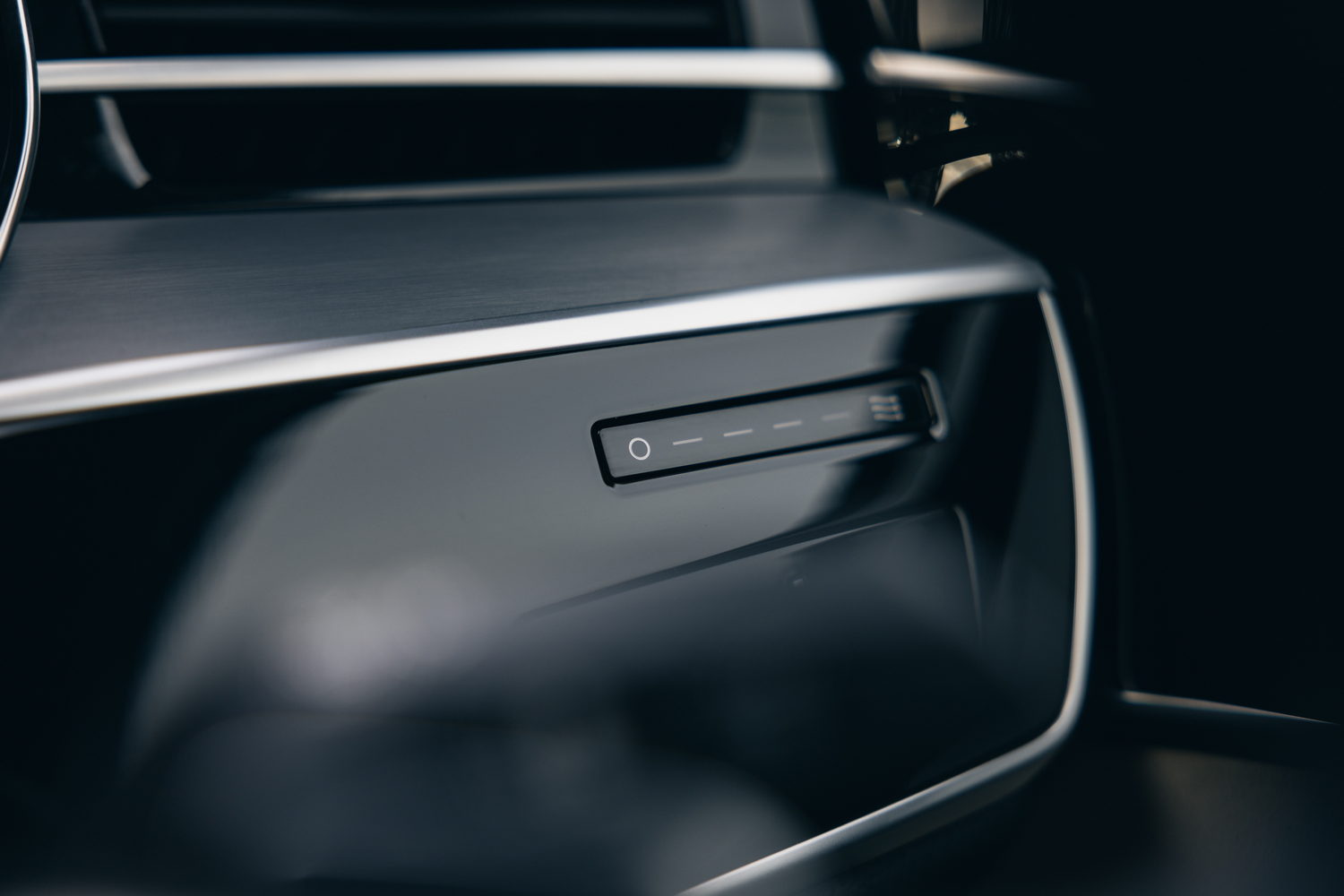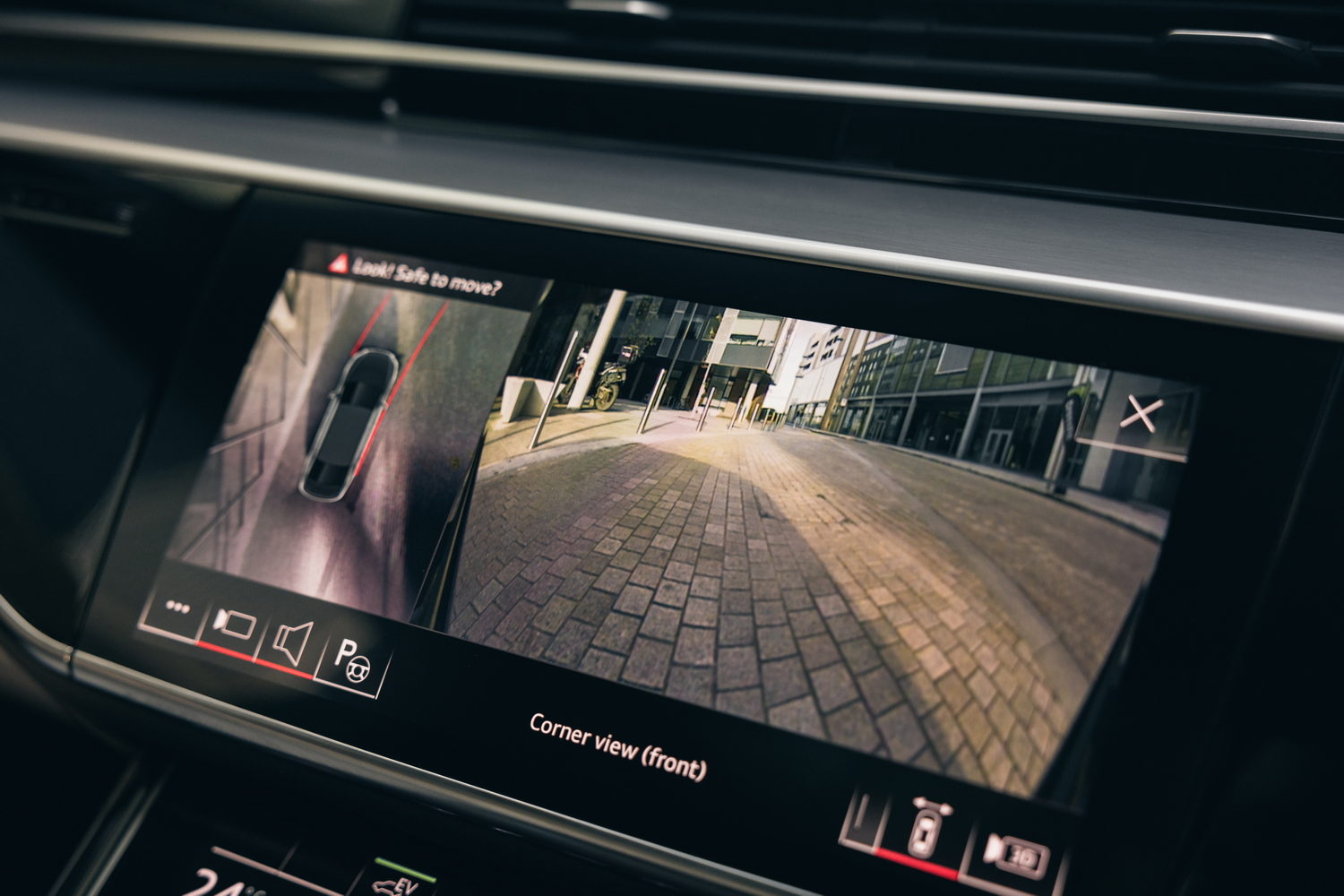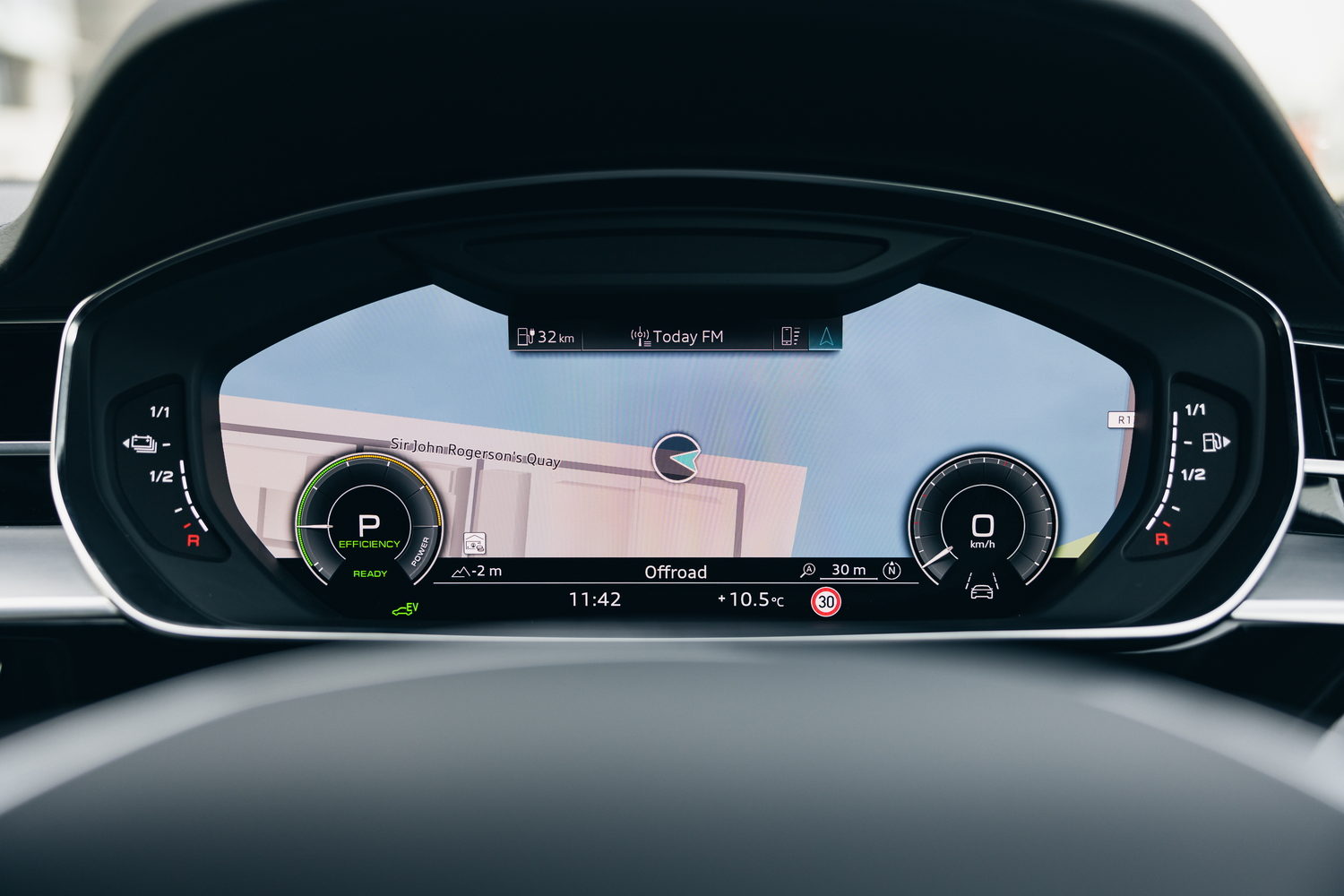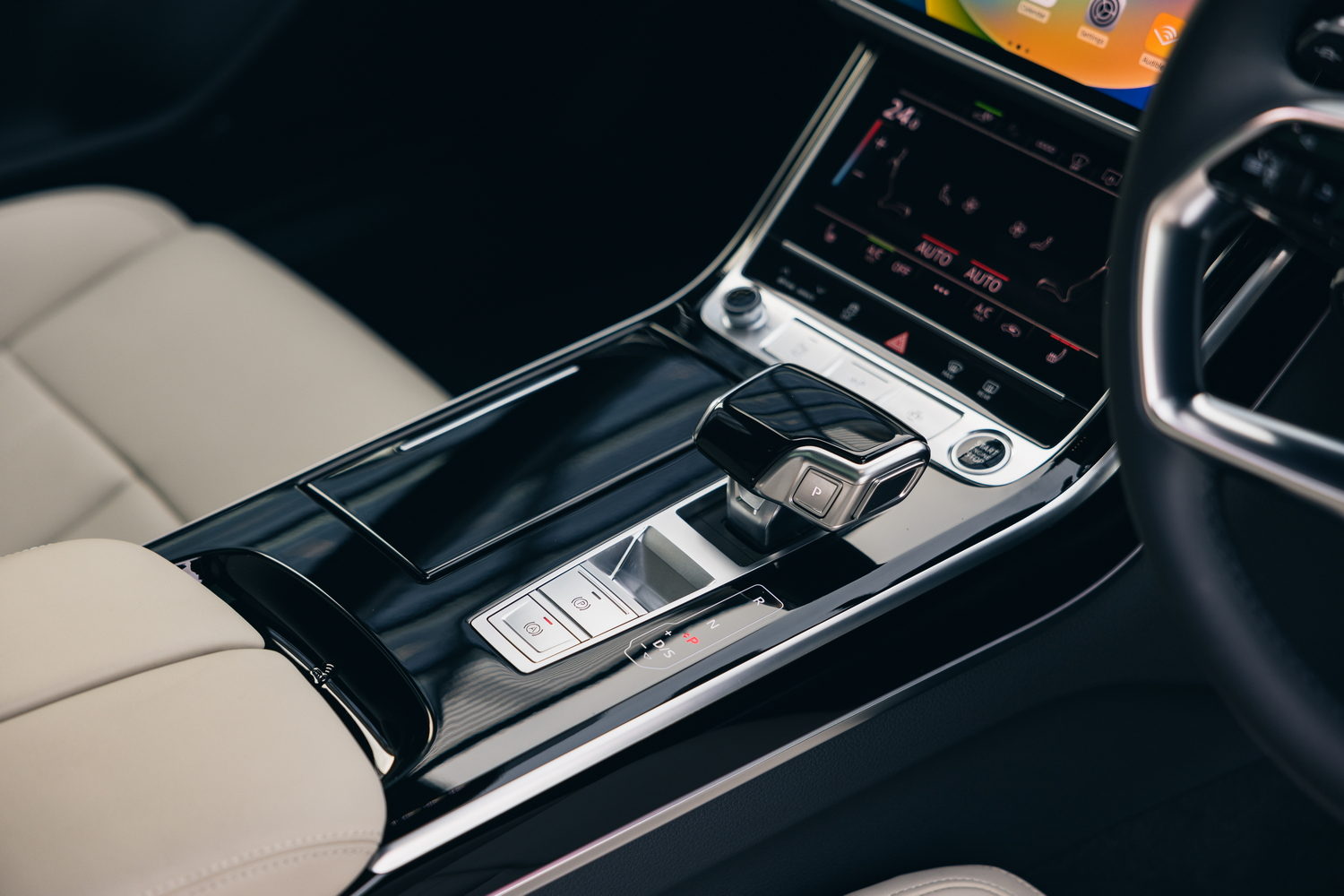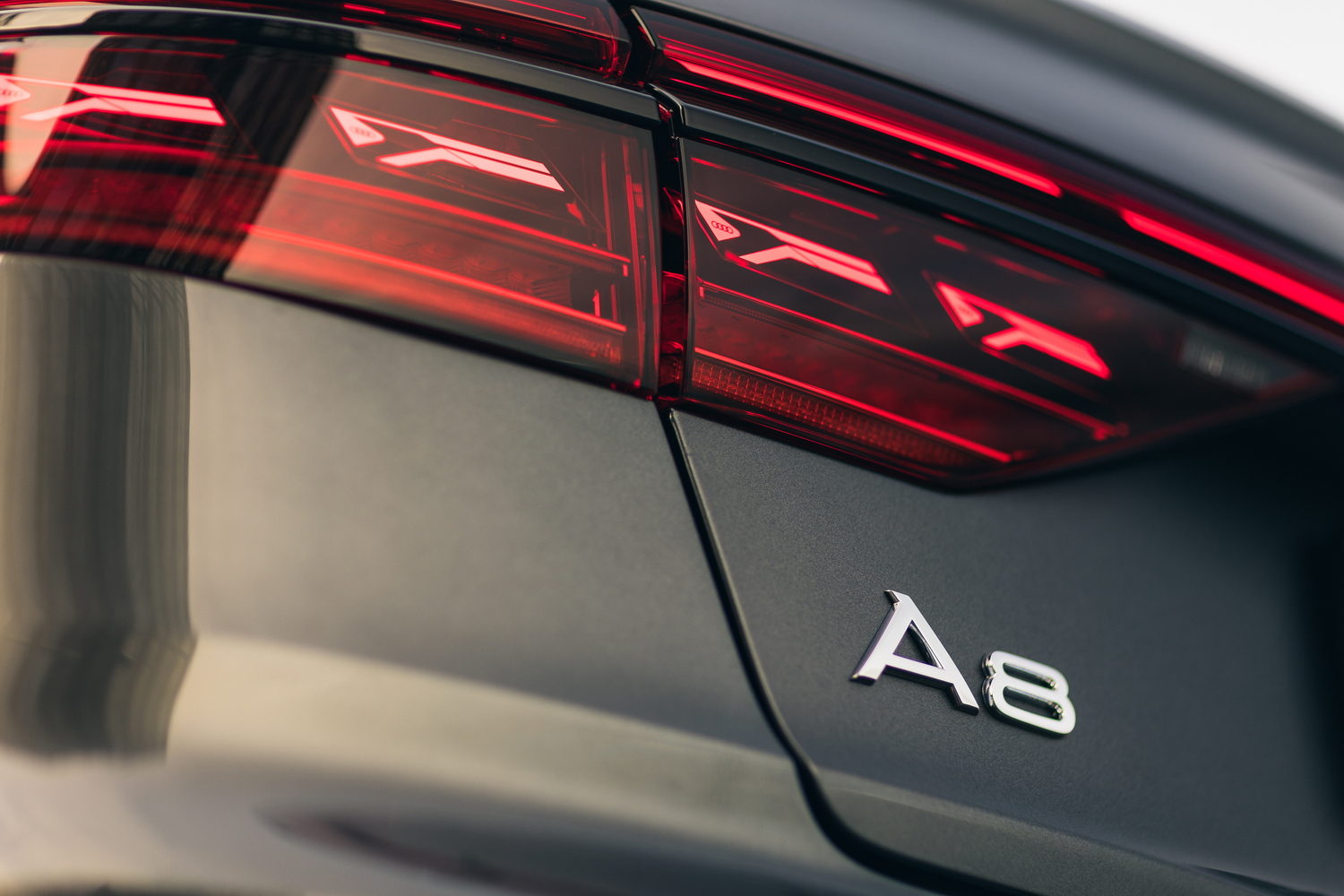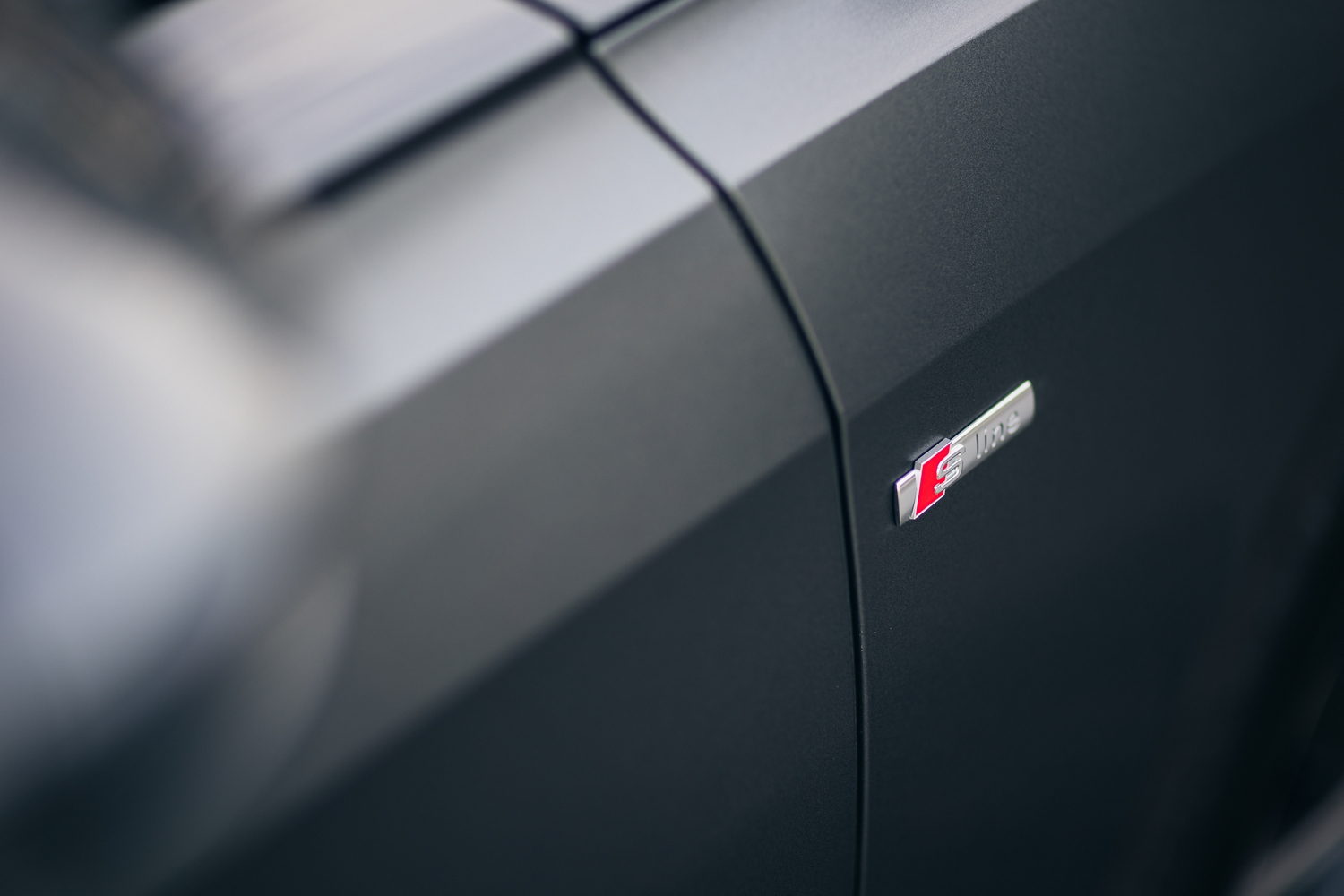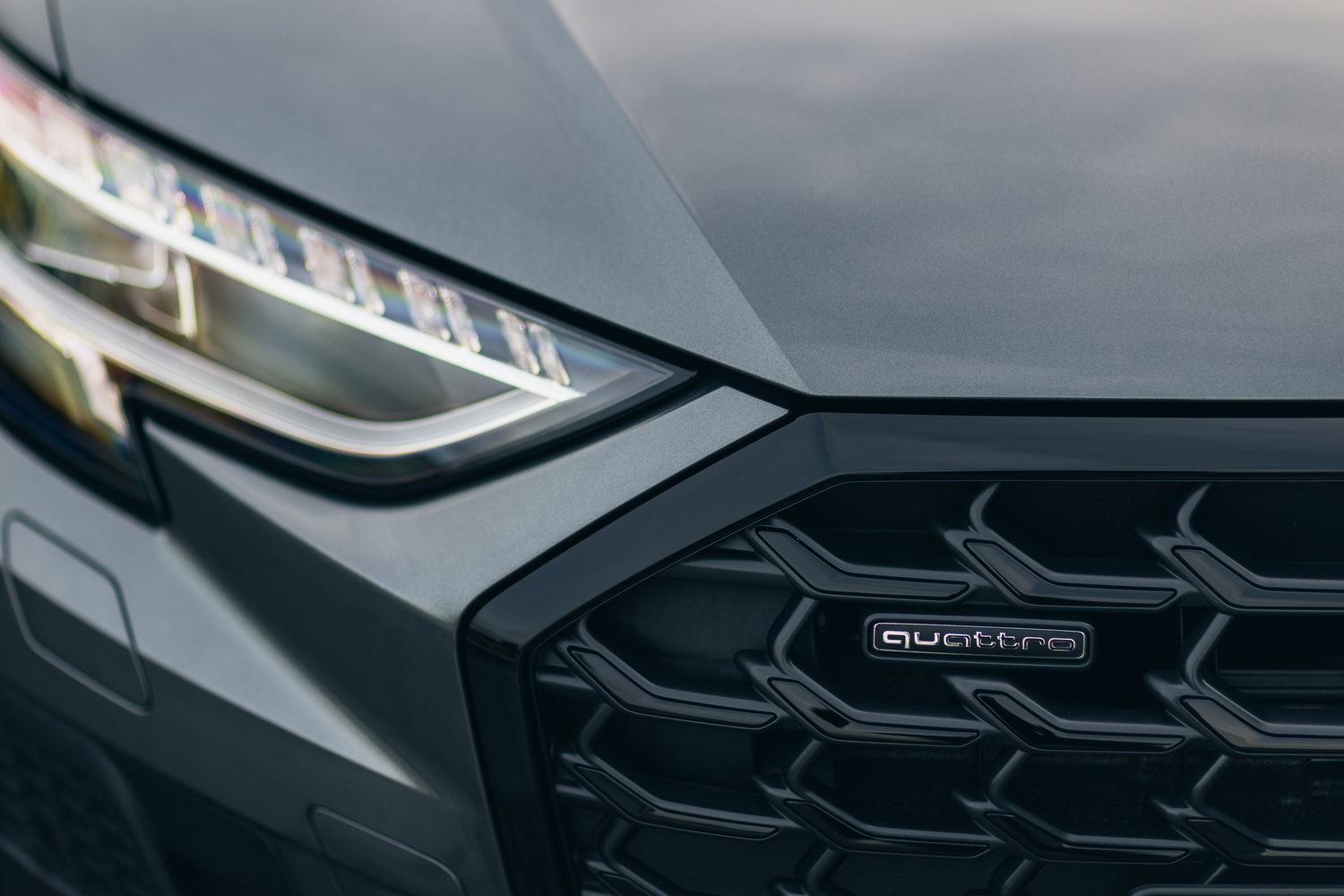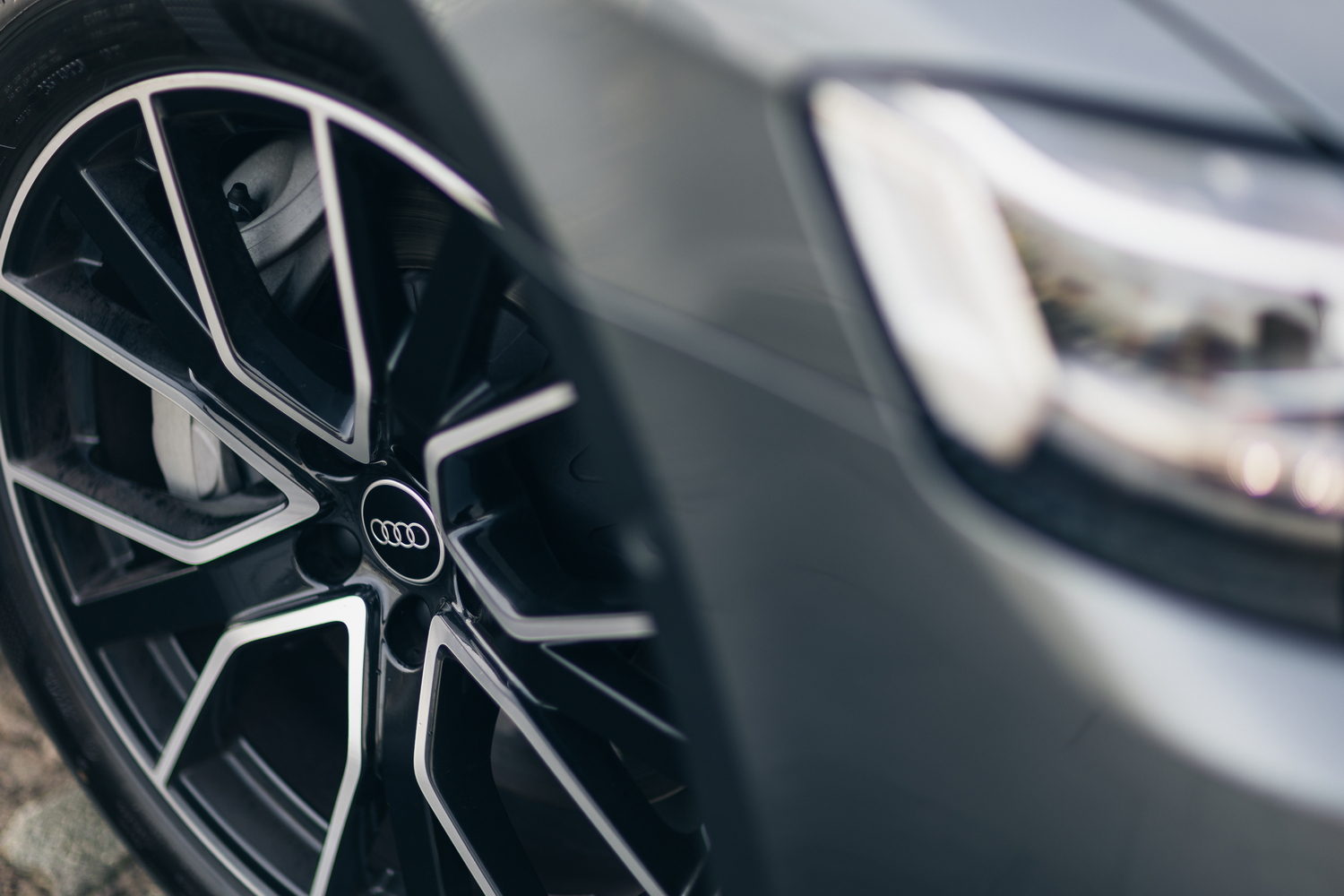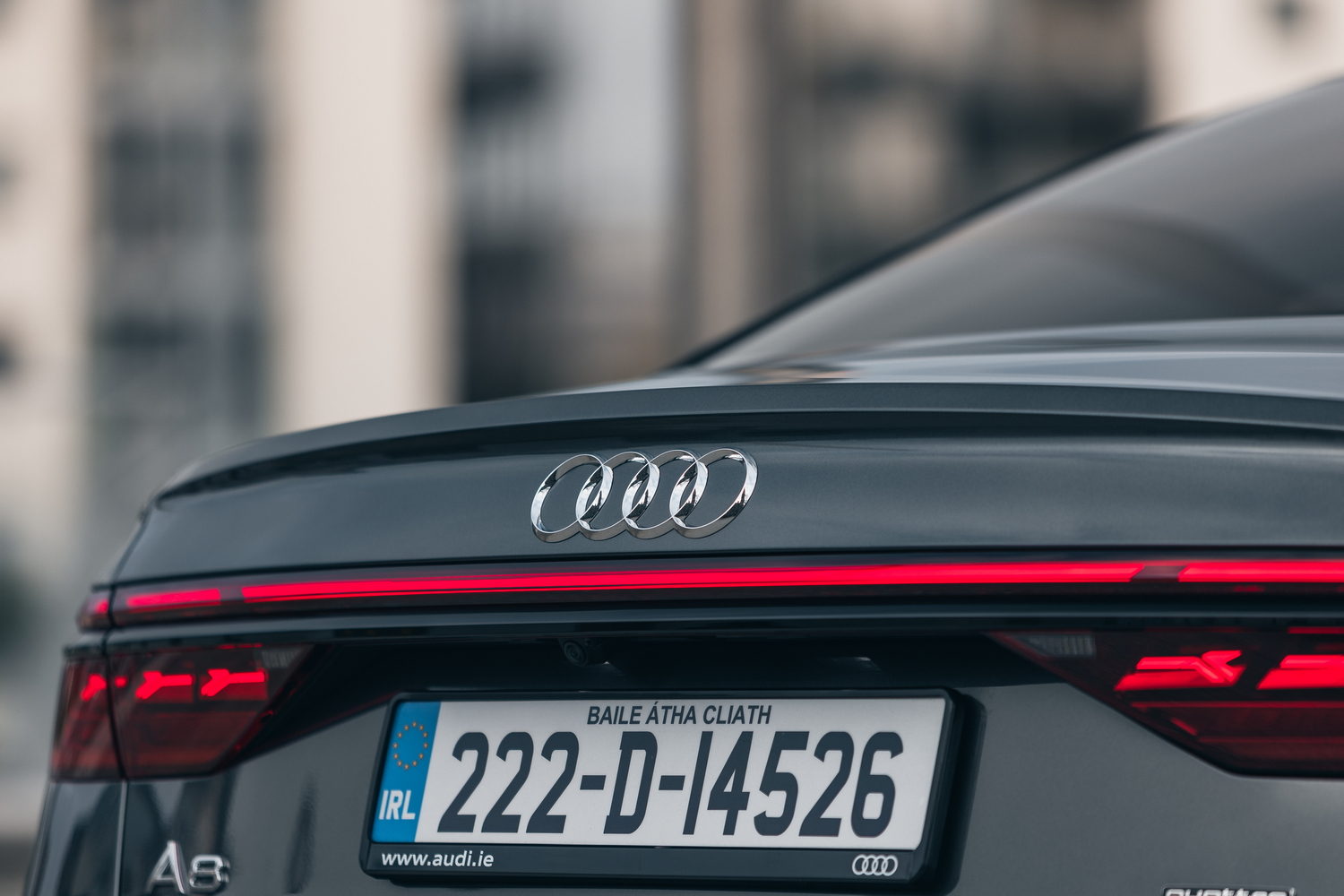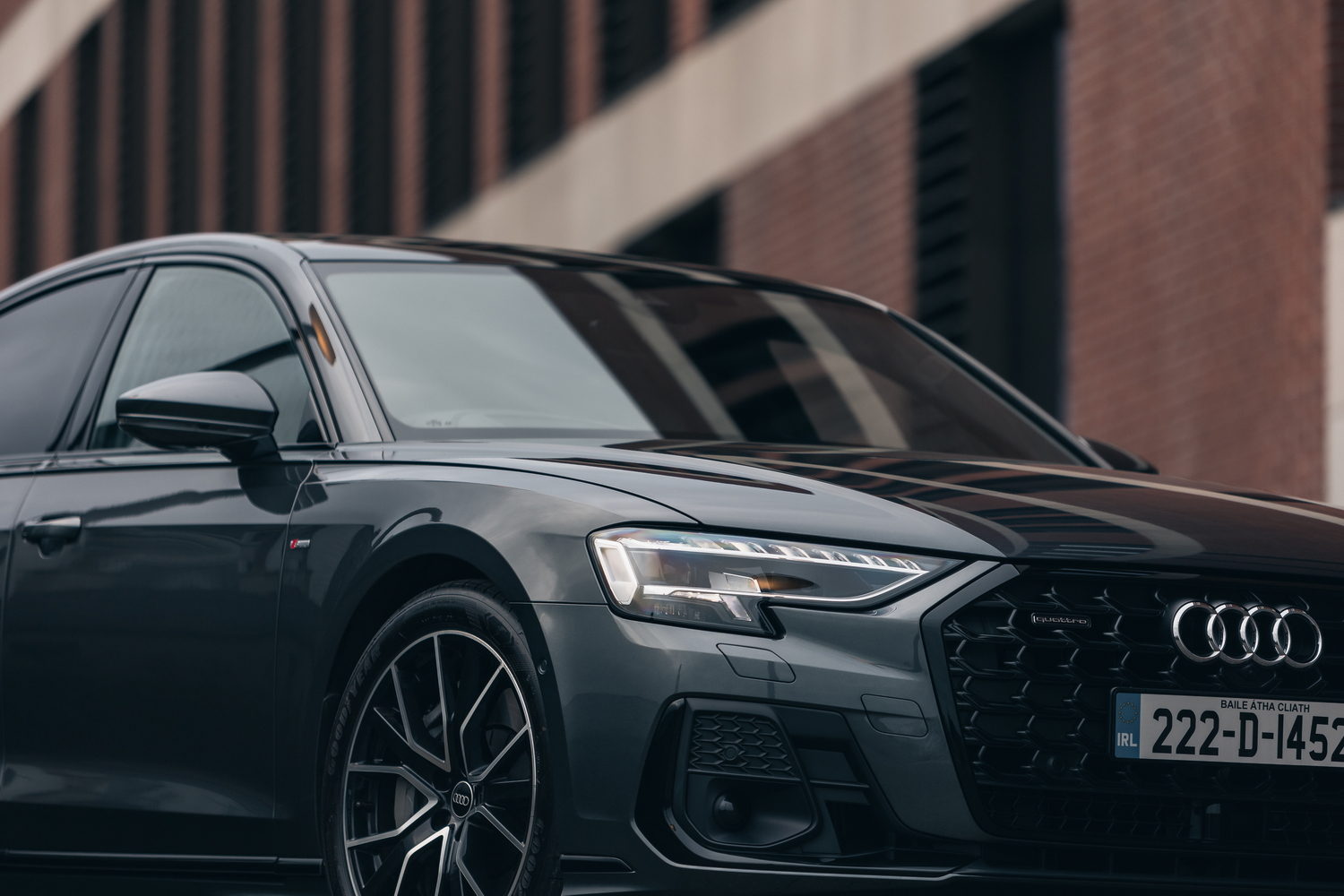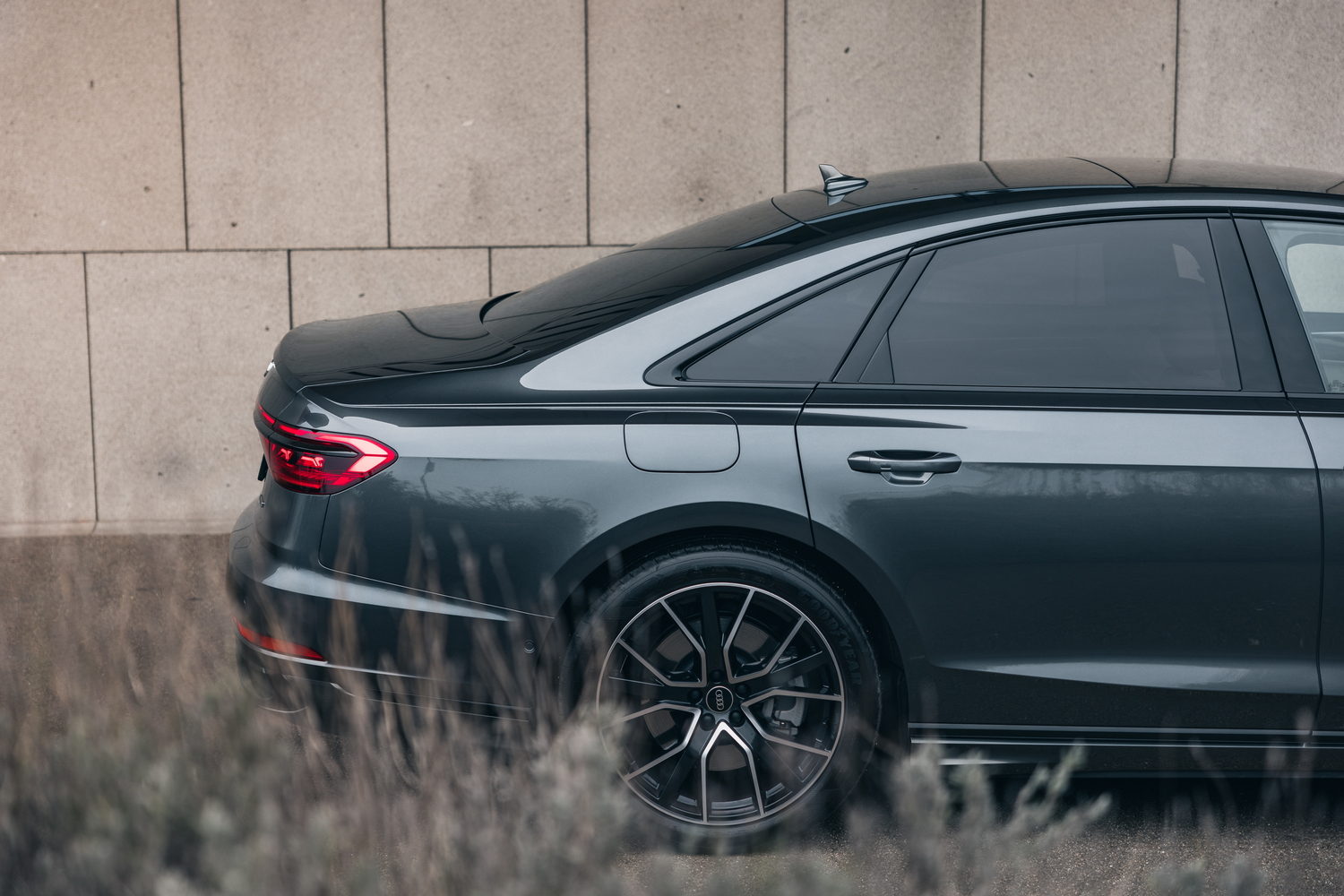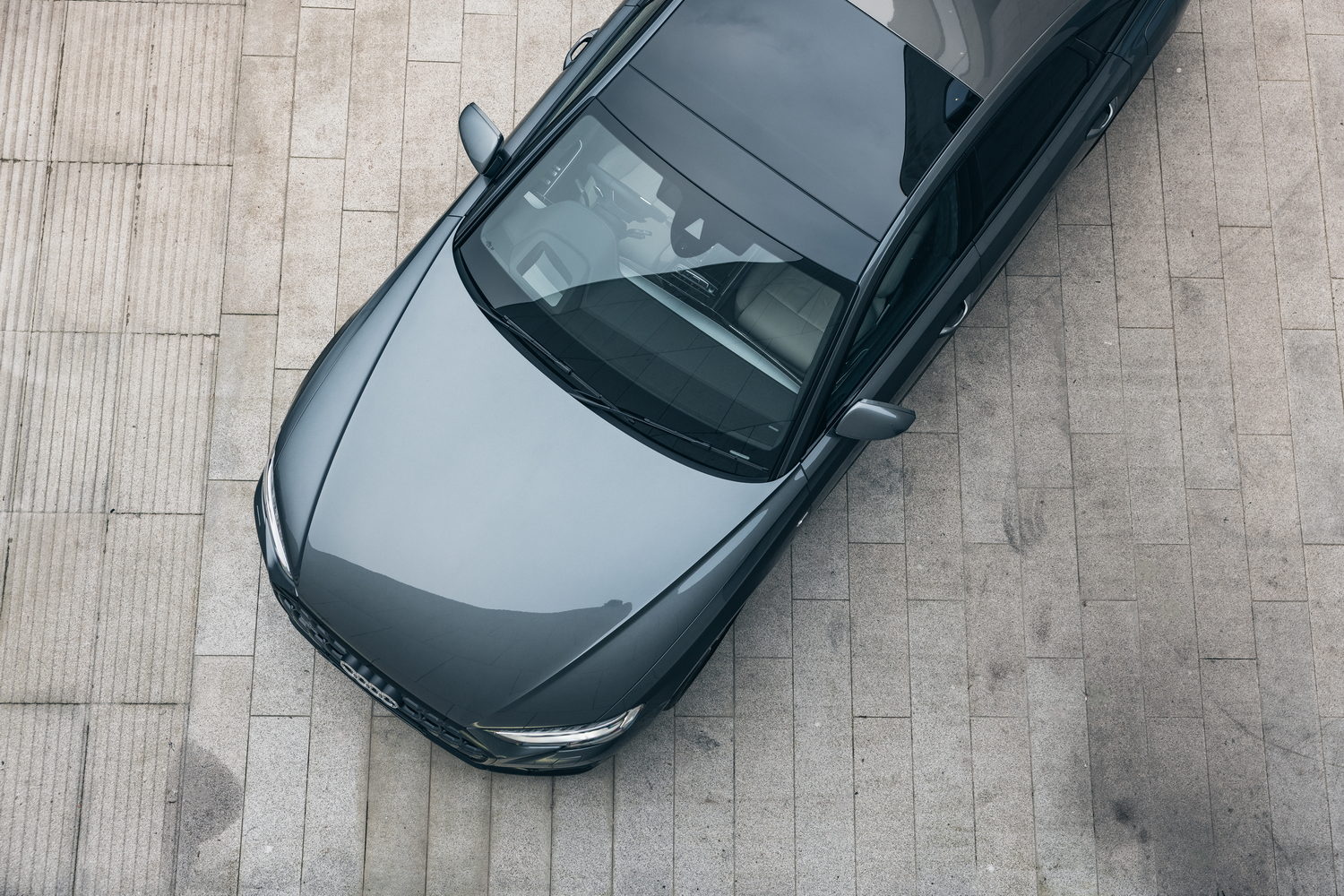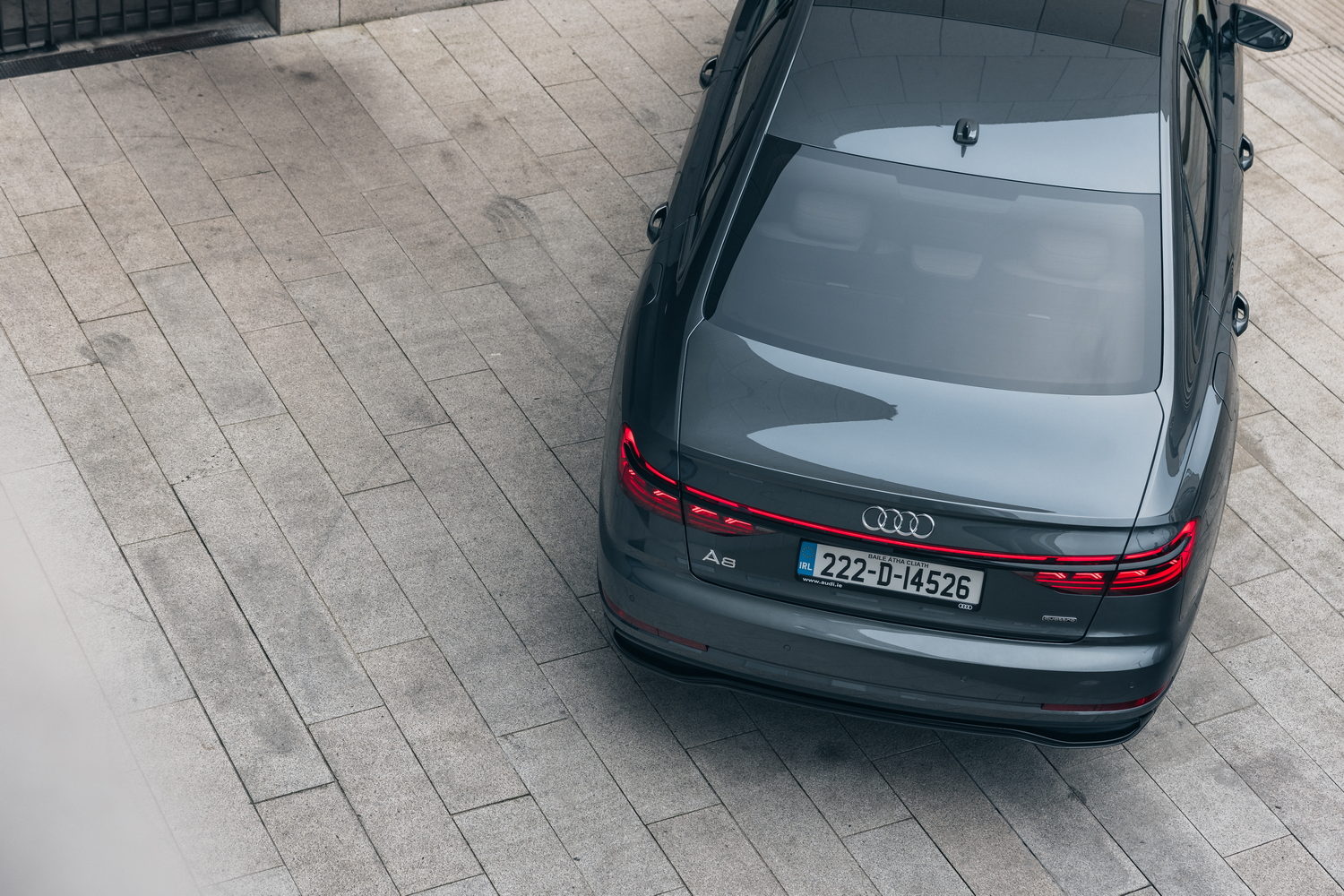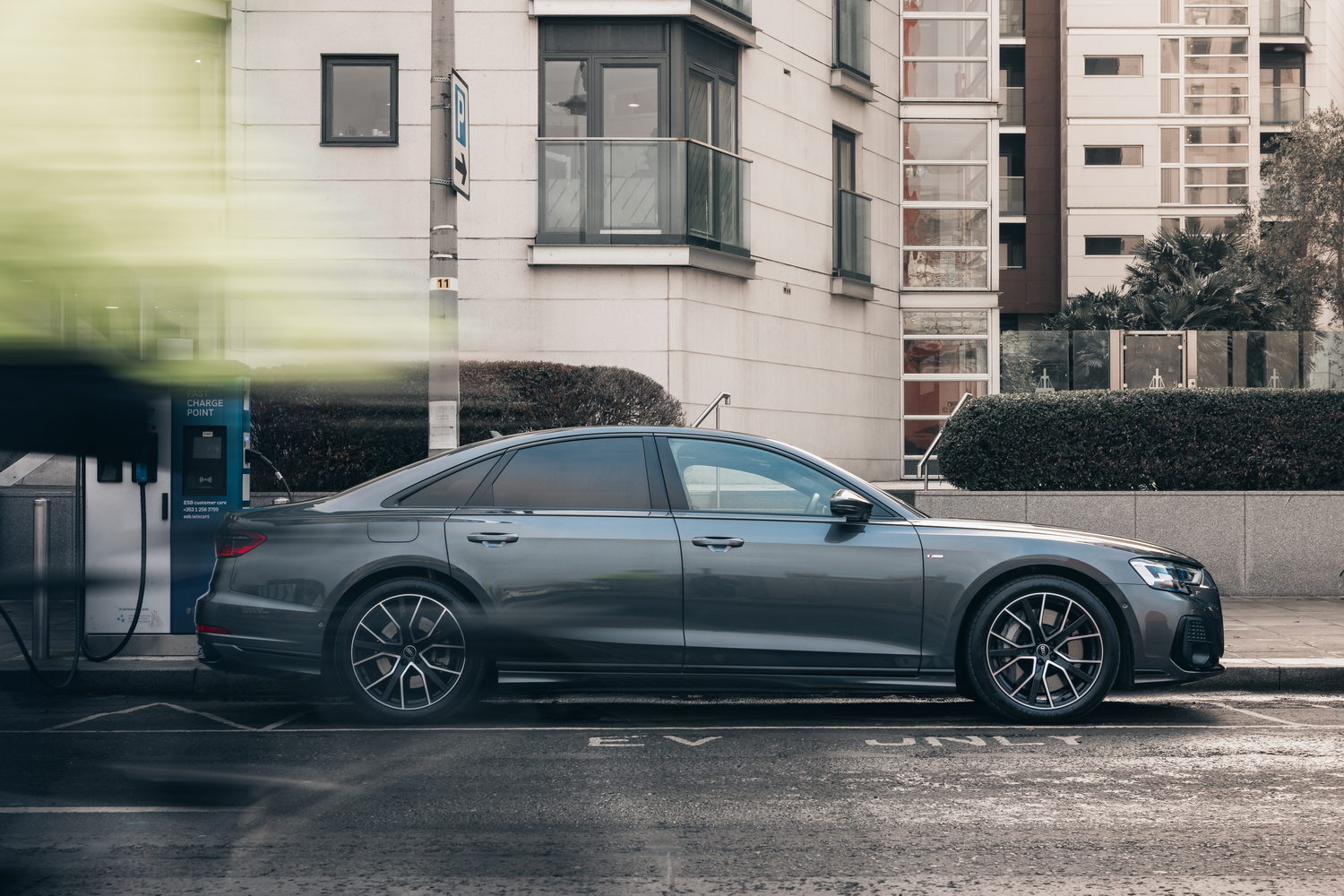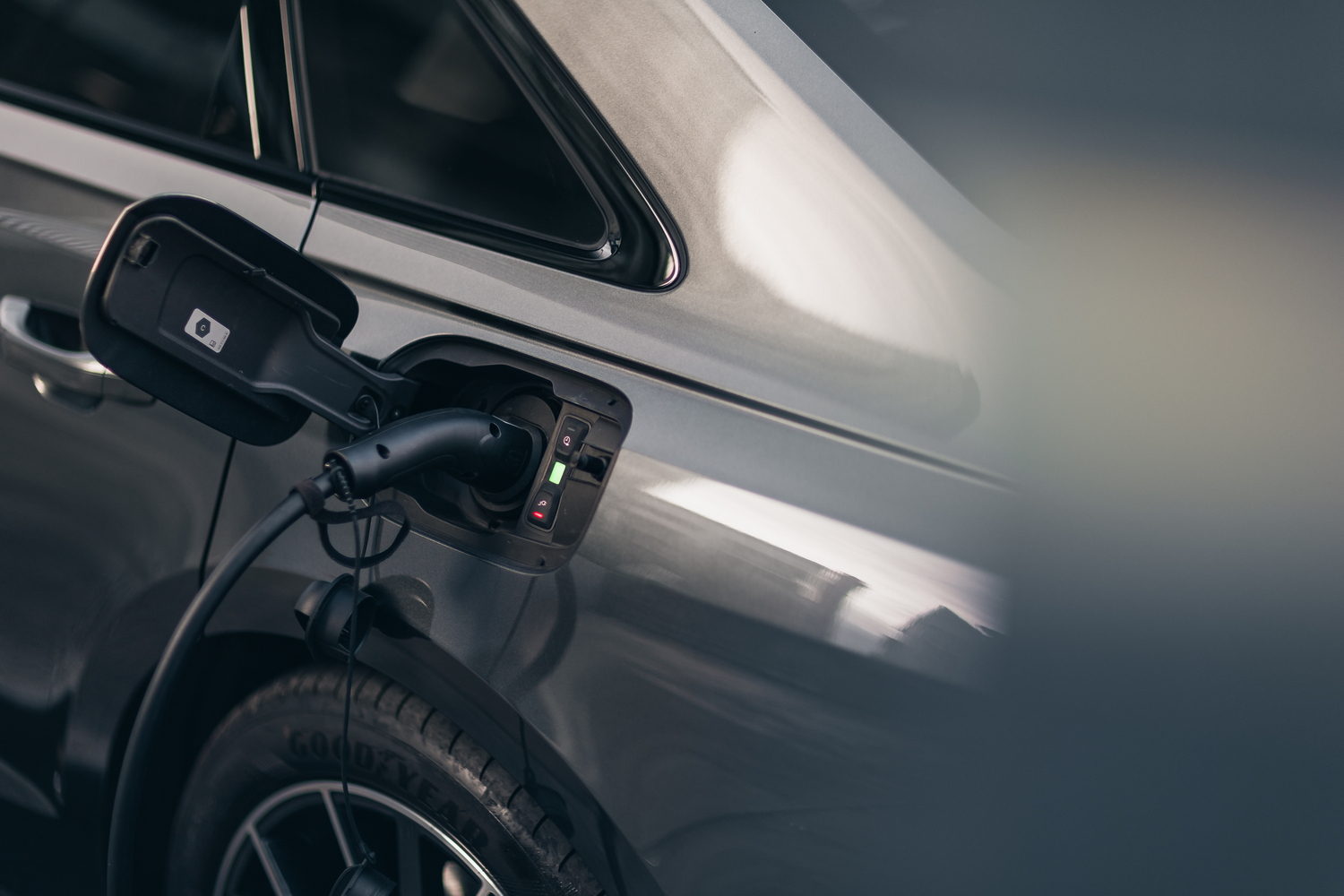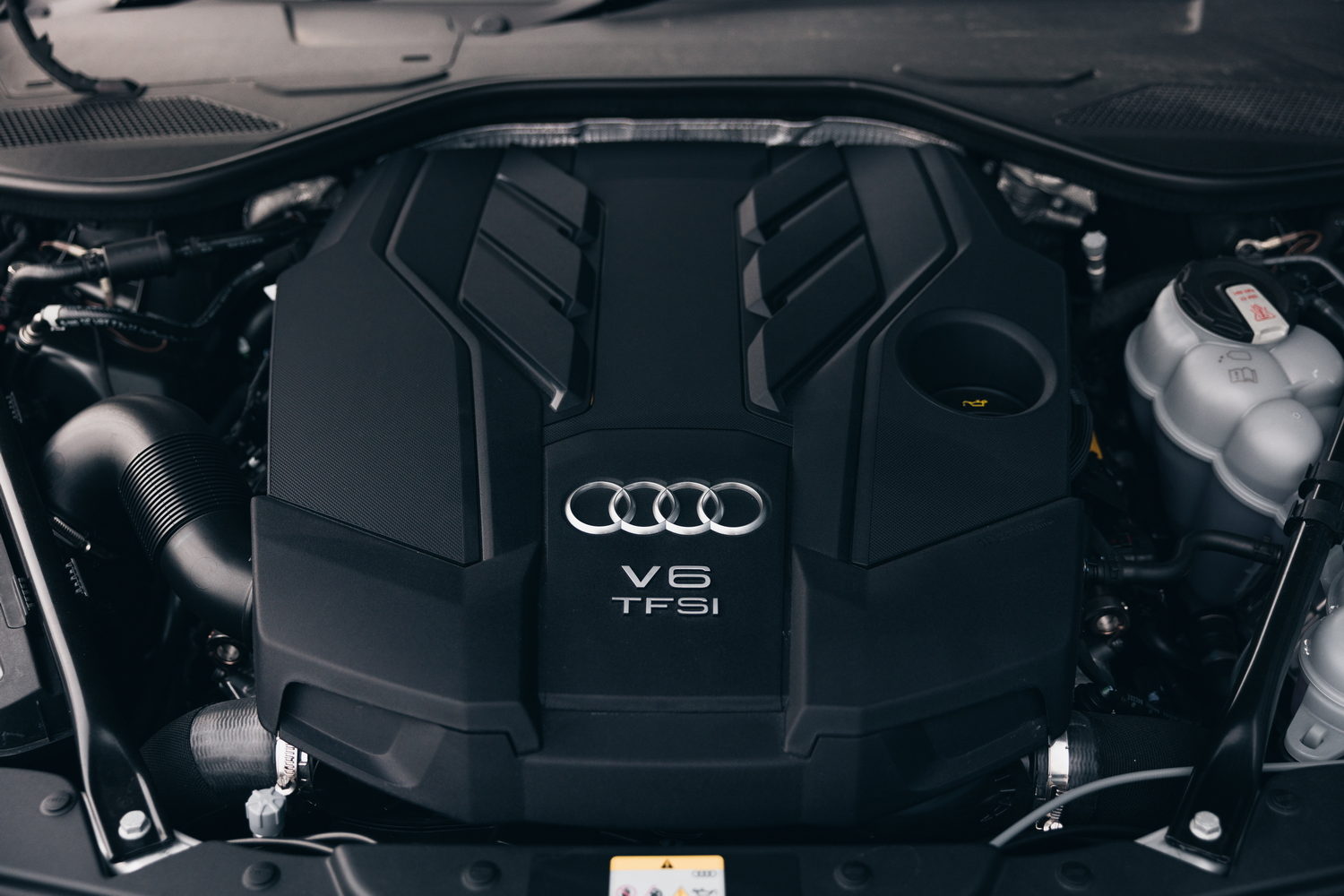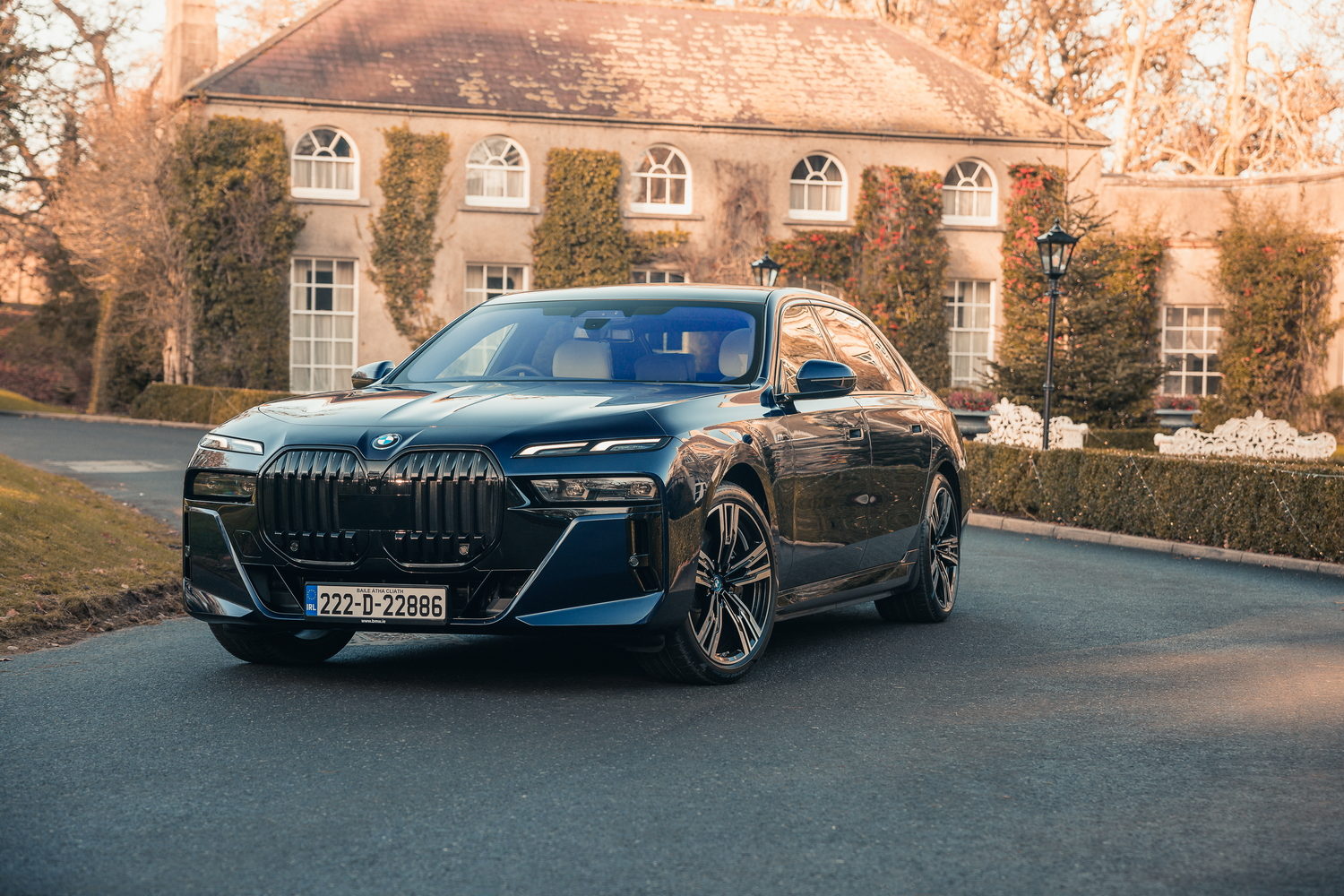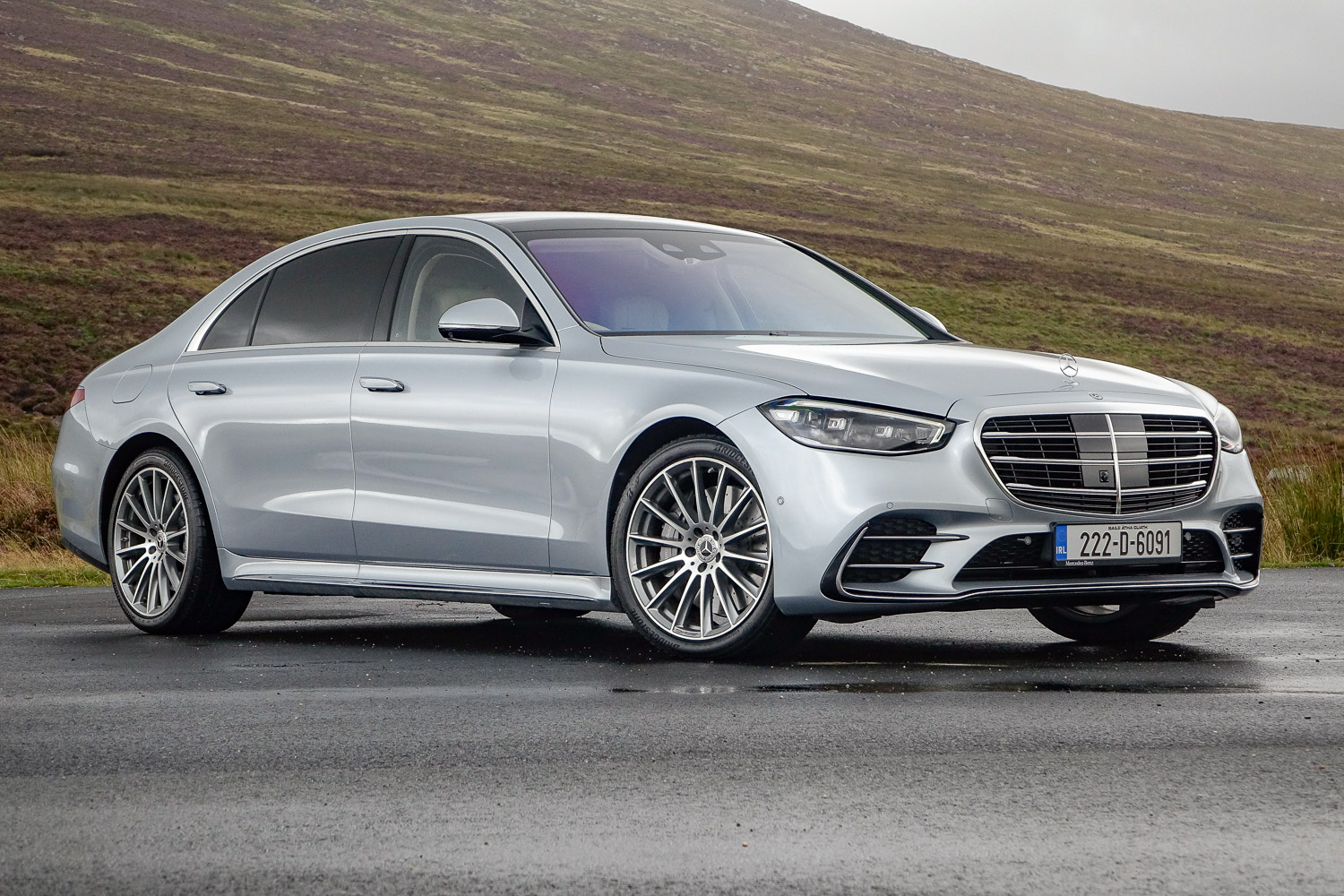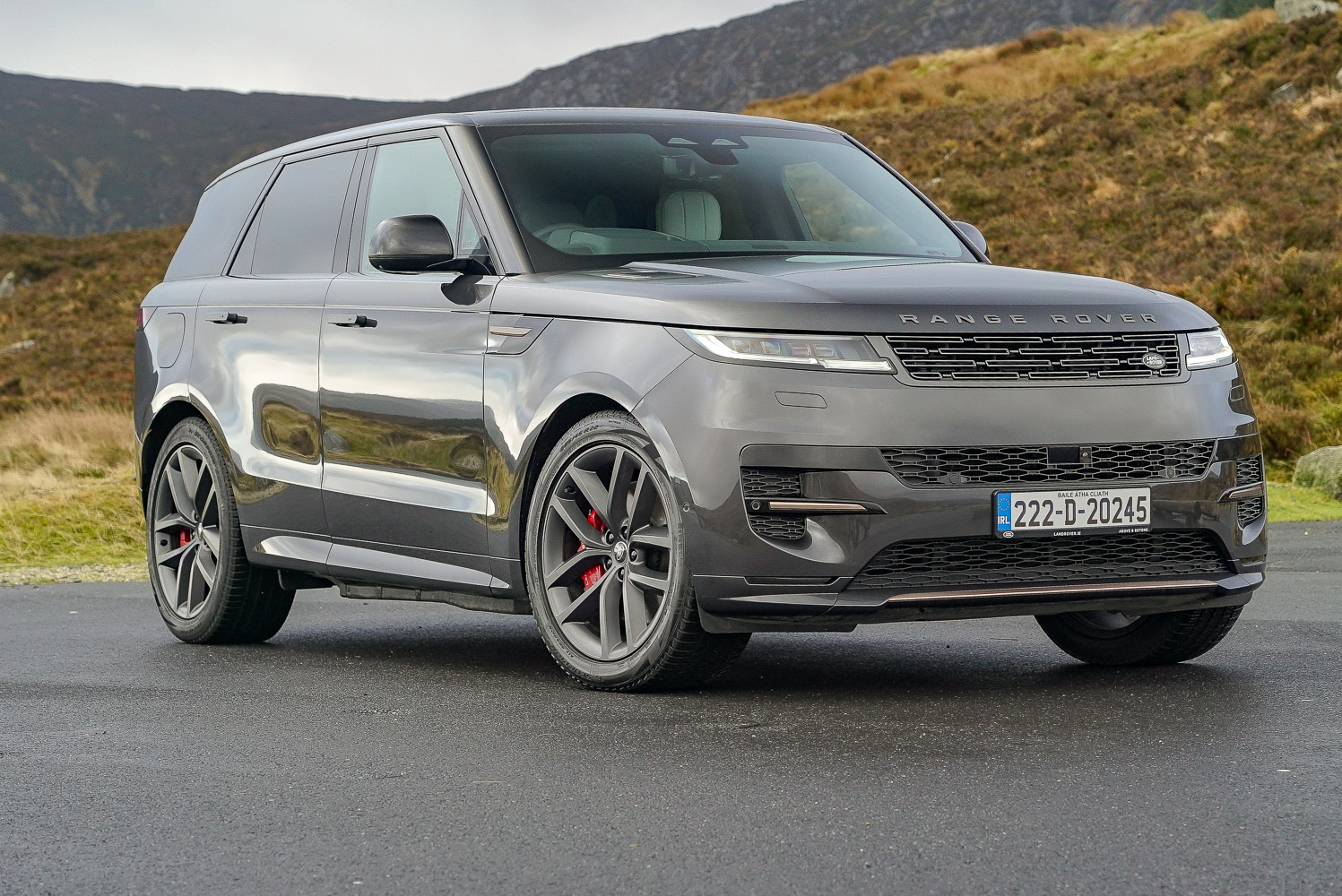Audi A8 overview
In the battle of the luxury limousines, the Audi A8 has always been a bit of an underdog. When you think of luxury limos, it's the Mercedes S-Class that normally springs to mind first, while the driver's choice has been the BMW 7 Series. But the A8 has its own innovations and ability, and that means it should never be ruled out of contention. Even more so now that Audi has seen fit to give it an update.
The revisions to the A8, a car that was first introduced in 2017, are subtle to say the least. When you consider that the current model looked like an evolution of the third generation in the first place, then you'd be forgiven for not noticing the new updates. There's a revised look for the nose and more chrome for the grilles of certain versions, while new HD Matrix LED lights are used front and rear, which put on quite the light show when you lock or unlock the car.
Where the main updates have been made are in terms of the range structure, with the A8 moving closer to offering a plug-in hybrid-only model line-up. The diesel engine is now limited to the standard wheelbase car, while the TFSI e plug-in hybrid powertrain comes in standard and long-wheelbase guises. The TFSI e isn't much different from before, though. Audi has also introduced a sporty S line upgrade, which helps bridge the gap - in aesthetic terms - between the diesel and PHEV versions and the V8 twin-turbo S8 performance variant.
If an S-Class or 7 Series doesn't fit the bill as an alternative to the A8, then there are other options available. The new Range Rover is a luxury car masquerading as an off-roader, while the Lexus LS is the Japanese firm's tech-packed, hybrid limousine.
The Audi A8 model range
Prices for the Audi A8 start from €106,475 for the 60 TFSI e plug-in hybrid model, which is around €15,000 less than the 50 TDI diesel's starting price. The TFSI e features a turbocharged 3.0-litre V6 petrol engine combined with an electric motor and a 17.9kWh battery. There's a maximum power output of 462hp and 500Nm of torque, for a rapid 0-100km/h time of 4.7 seconds, while the battery is good for an official range of up to 58km on electricity alone.
The 50 TDI diesel is powered by a 3.0-litre V6 making 286hp and 600Nm of torque and, while the 0-100km/h time isn't as fast as the PHEV's, a time of 5.9 seconds is still impressive for such a large car.
Both models come in SE, S line and Luxury trims, while air suspension, quattro four-wheel drive and an automatic gearbox are also fitted as standard.
The range kicks off with SE trim, but this still offers a generous equipment list. There are 18-inch alloy wheels (although Audi offers a number of upgrade option up to 21 inches in size), LED headlights and OLED taillights, a memory function for the heated and folding door mirrors, two-zone climate control, a heated steering wheel, electric front seats with heating and memory function, LED ambient lighting, acoustic and insulated glass, electric sunshades for the rear windows, a cooled glovebox and silver and natural wood inlays to add an upmarket feel.
Technology on board includes Audi's highly configurable Virtual Cockpit digital dials, a head-up display and MMI Navigation Plus on a large 10.1-inch touchscreen display. This incorporates a Bluetooth and smartphone connectivity, while a three-year subscription to online services such as Google Maps, weather info and media streaming is included, too. There's also a reversing camera and Audi's 'Parking System plus' sensor suite.
Luxury models come at a premium of around €7,500 over the 60 TFSI e SE and €13,000 for the 50 TDI SE, and the additions are 20-inch wheels, HD Matrix LED headlights, more chrome exterior trim, four-zone climate control, softer leather, a Bang & Olufsen stereo, a 360-degree camera system and haptic feedback for some of the cabin controls.
Upgrade to S line for around €5,500 extra on the A8 (or around €2,750 for the A8 L), and carbon-effect interior trim is added, there's a new black headlining, a multifunction sports steering wheel, S line branded, quilted leather seat trim and a sportier body kit, though the latter is a subtle upgrade rather than an in-your-face one.
As well as the A8, there's the A8 L, which has a 13cm longer wheelbase to create additional room for the back seats. The A8 L carries a premium of around €3,000 over the standard model, but your choice is limited to the TFSI e plug-in powertrain and either Luxury or S line trims.
At the top of the range, the S8 is the performance model that starts from €201,310. It's only offered in standard wheelbase guise, and it features a 571hp twin-turbocharged V8 petrol engine, still with a Tiptronic automatic gearbox, quattro four-wheel drive and air suspension. It gets a sporty makeover, with brushed aluminium exterior detailing, including the trademark silver-coloured door mirrors, 21-inch alloys, new bumpers, a 3D Bang & Olufsen sound system, carbon and aluminium cabin trim, uprated interior lighting and sports front seats, along with rear-wheel steering and a torque vectoring rear differential for sportier handling.
The Audi A8 interior
While the Audi A8 isn't much to look at - it could easily be confused with the smaller A6 from a distance - the interior is where its luxury credentials shine through. Build quality is first-rate, and the use of leather trim, wood veneers (or carbon in some models) and metal switchgear gives it an upmarket quality that puts it ahead of the rest of the Audi range. Another highlight are the air vents, which 'unveil' themselves when you turn on the car. It's a trick that Jaguars used to do, and adds a bit of a talking point to the A8's cabin.
The dashboard is dominated by the three screens: the Virtual Cockpit dials, the large upper touchscreen and the secondary display below for the climate controls. The display quality is great, but we're not really fans of the touchscreen set-up for the air conditioning. It's very large and seems to take up too much space that could be used for storage instead.
There's so-called haptic feedback on the lower display, too. This means there are 'clicks' as you press the digital buttons on the display, but when the upper touchscreen doesn't have this feature, it takes some adjustment to use the right pressure on the buttons. It also means that the display shows up finger marks very quickly.
While the screens take up a lot of space, there's still plenty of room in the cabin up front. A wide range of electrical adjustment for the driver's seat means it's simple enough to get comfortable, and the soft-touch materials mean it feels special, even if the cabin architecture looks similar to what you'll find in an A6 - or even an A4.
In the back, the amount of legroom on offer is generous for even the tallest passengers - it almost makes the long-wheelbase A8 L seem like an unnecessary extravagance. The rear cabin is designed to carry two in comfort, so, while there are three seatbelts, the middle is a narrow perch that's only really for occasional use, especially because the transmission tunnel eats into foot space.
Instead, the middle seat can be folded down to create a central armrest that divides the cabin left and right. The outer chairs are comfortable, and they also feature ISOFIX mounts, so small children can travel in first-class luxury if necessary. The rear door blinds are controlled via the electric window switches, while the rear blind is operated separately.
A powered boot lid opens to reveal a 390-litre load area, which is 115 litres down on the diesel-powered A8's boot. That's because the TFSI e's drive battery is located under the floor, and this also means there's no under-floor storage.
The Audi A8 driving experience
First things first: the Audi A8 is a big car. Measuring over five metres long and almost two metres wide, it doesn't fit easily into standard parking spaces and makes negotiating narrow streets an interesting experience. But find the right road, and the A8 is surprisingly nimble for such a large car.
That agility can be partly put down to the standard-fit air suspension and adaptive damping, which can be adjusted to boost comfort or response via the Drive Select driving mode selector. In the sportiest settings the A8 corners with next to no lean as the body stays flat through corners. The traction of the four-wheel-drive system boosts this performance, although the A8 still feels like a big car to hustle along.
Take things easy, and the A8 TFSI e is supremely comfortable. There's next to no road or wind noise thanks to acoustic glass and double glazing for the doors, while the hybrid system is quiet, too. Silent running in electric mode adds to the serenity, and the V6 petrol unit is still hushed when it finally does kick in. It revs smoothly when accelerating hard, but again, it's never vocal enough to be considered harsh. That air suspension contributes to the sense of comfort, too. Hit a speed bump, and the suspension simply absorbs the impact, leaving occupants unruffled.
One neat trick that the A8 has is its Efficiency mode. Activate this, and the car uses its navigation maps and its suite of other sensors to promote more efficient driving. It does this by double tapping the accelerator under your foot to tell you when to ease off when approaching a junction, or if you're closing in on slower traffic. It can do the same thing when the on-board cameras detect a change in speed limit, too.
We managed around 40km on electric power when the hybrid battery was fully charged, and a return of 8.6 litres/100km once the battery was exhausted.
There's no fast charging available for the TFSI e, so the fastest top-up you can do takes two and a half hours. Since fuel economy isn't great when the battery is flat, we'd recommend plugging in as often as possible, too.
Our verdict on the Audi A8
The A8 has always been the most restrained and understated of the luxury saloons. Audi has made the new one a little more obvious with the addition of S line trim and a new grille and flashy LED lights, but it still flies under the radar. Emphasis has been placed much more firmly on the TFSI e plug-in models, too. They're not as expensive as the diesels, and should be cheaper to run every day, as long as you keep the battery charged. The A8 doesn't wow in the same way that the new electric 7 Series or S-Class does, but it's as competent an option as ever.

